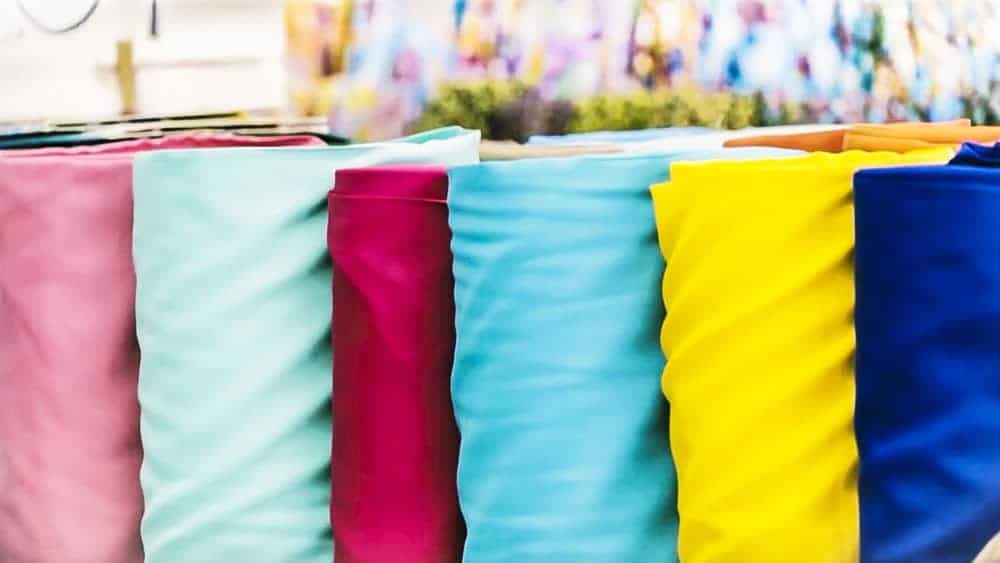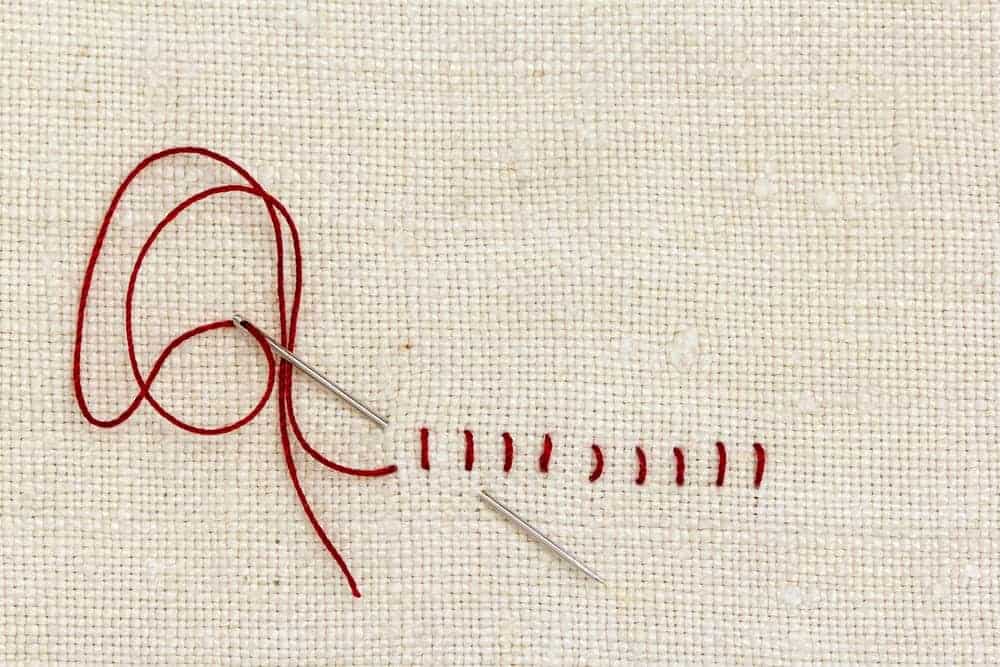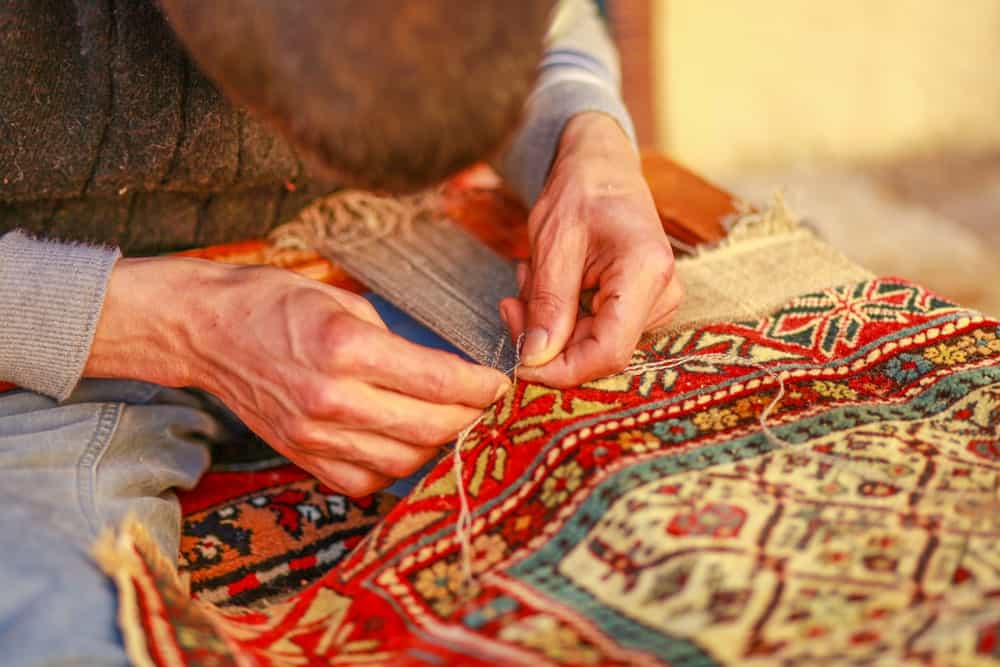A wide variety of materials (both naturally-occurring and synthetic) are used to make clothing, accessories, and shoes. Here's a closer look at the many different types of fabric for footwear and apparel, as well as some tips to help you get started adding colorful additions to your wardrobe.
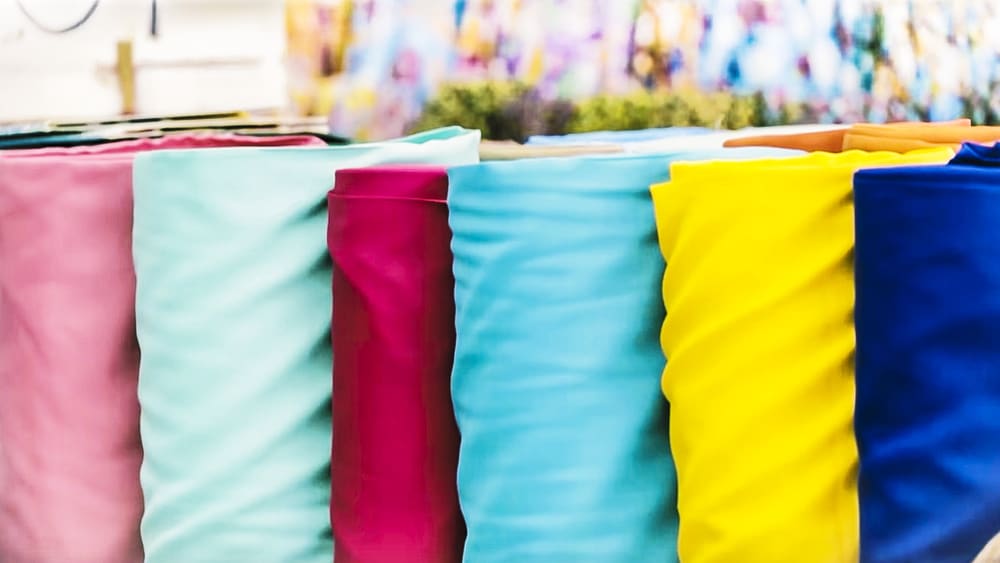
We often don’t think about the fabric our clothes and shoes are made of until we
a) want to sew our own apparel or
b) need to check the care label on a particular garment to see how it should be cleaned.
We may discover that the shirt we thought was sewn from cotton is actually 100% polyester. Or you might find out that your beloved suede jacket is a lot harder to clean than you had previously thought.
There are more fabric varieties out there than you might realize. Here’s a look at the different types of fabric used for clothing and footwear.
Table of Contents
- Types of Fabric for Apparel and Footwear
- Types of Fabric for Footwear
- Common Sewing Terms
- Sewing Tools
- FAQs
Types of Fabric for Apparel and Footwear
Synthetic Fiber
As the textile industry capitalizes on new technologies, apparel manufacturing consists increasingly of synthetic fibers. Polyester is the most common of these. Here’s a quick overview of the synthetics that are used most frequently.
Elastane
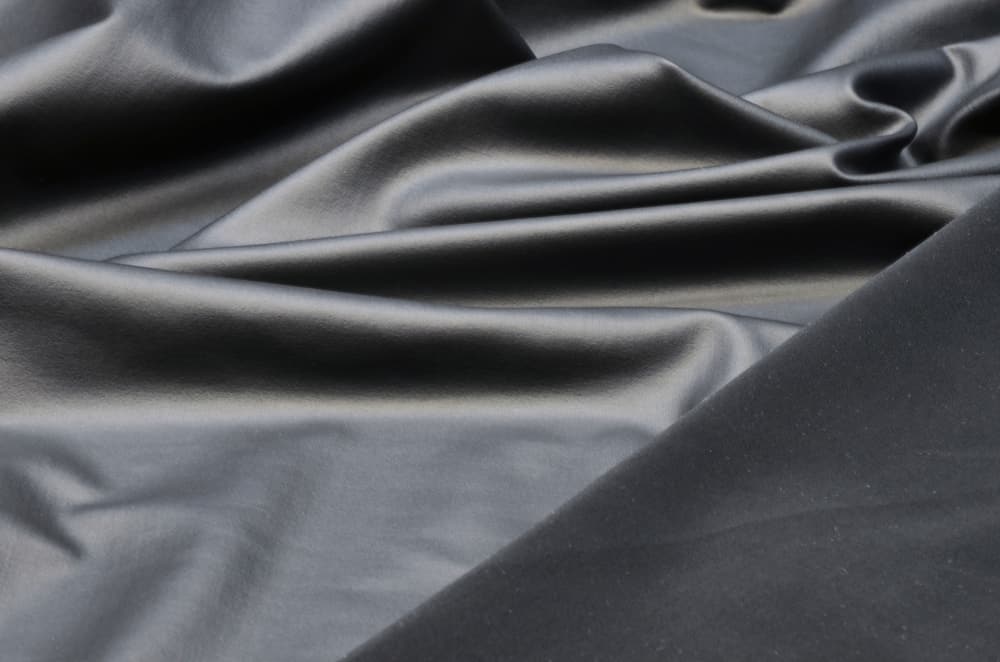
Elastane is a stretchy fabric that more commonly goes by the names spandex or lycra. (Spandex is any stretchy material that has elastic). This is a polyurethane material known for its moisture-wicking, heat-retaining capabilities. Not surprisingly, this is the stuff a lot of workout clothes are made of. Elastane is also found in underwear waistbands, socks, and sports bras. Interestingly, actors sometimes wear form-fitting motion-capture elastane suits when filming scenes that incorporate 3-D imaging.
Elastane is made entirely of synthetics. However, there are elastane blends that sometimes have natural fibers, such as cotton, woven into them.
Polypropylene
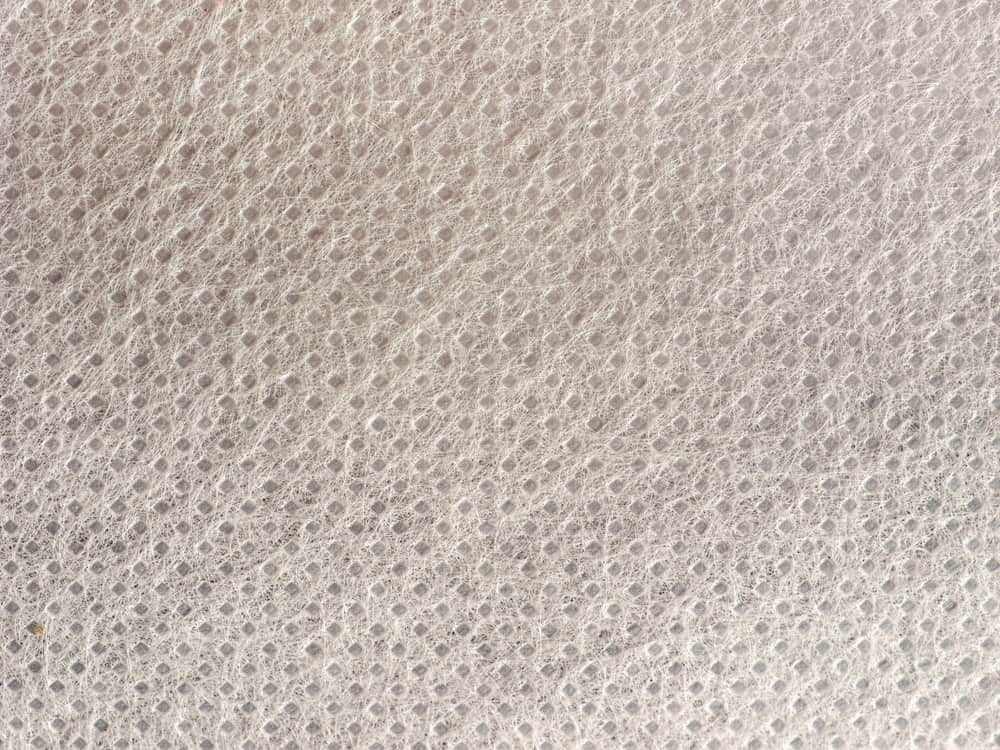
This tough synthetic is resistant to stains and fading. You can even bleach it without compromising its color. But that also means that dyeing it is impossible unless you have the scientific capabilities to return it to a heated state at which you can change its color.
Polypropylene is derived from natural gas. Due to its durability, it is more often used in upholstery than clothing. However, the COVID-19 pandemic led manufacturers to employ it in the production of masks and other types of PPE (personal protective equipment). You can find polypropylene online, but be mindful of where it is sourced. Some overseas retailers may not be able to vouch for its quality.
Polyester
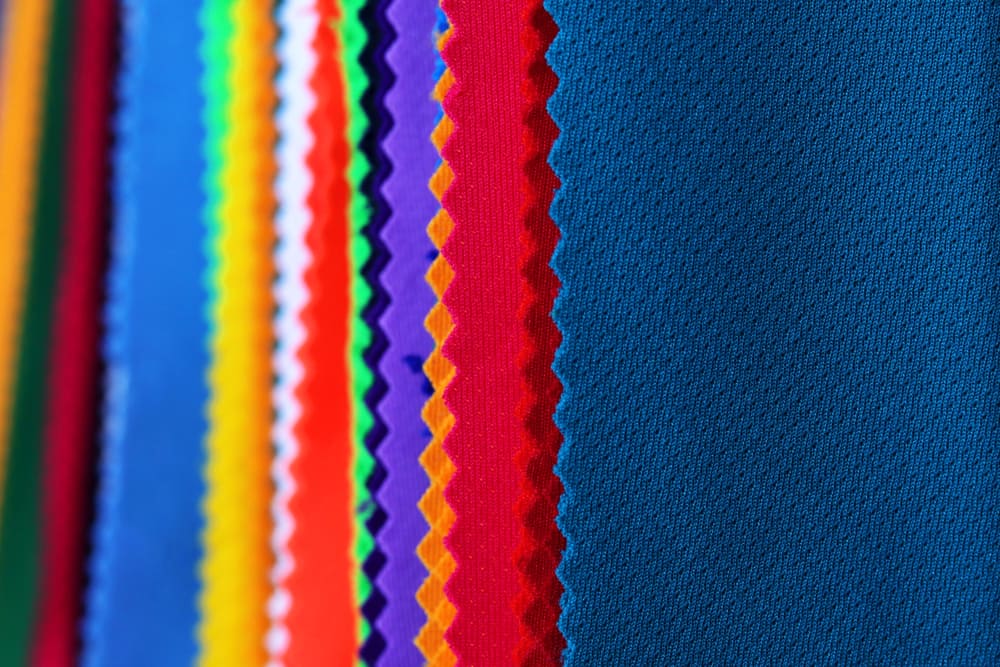
Many of us associate polyester with retro fashion trends. This term simply refers to any textile fashioned from polyester yarns. Polyester fabric is actually a shortened version of a long scientific term, polyethylene terephthalate (PET). This man-made polymer comes from ethylene glycol and terephthalic acid. When you mix those two compounds, you end up with a kind of plastic.
Polyester won’t stretch, wrinkle, or shrink, so it holds its shape well. It’s durable, lightweight, and low-maintenance. Additionally, polyester is known for its versatility; a variety of apparel has some percentage of polyester. This material comes in woven and knit forms. Its quick-drying capabilities make it especially suitable for outdoor wear.
A few caveats about polyester: This highly flammable fabric is not something you want to wear if you’re going to be around an open flame. Polyester is not a favorite among people who prefer natural materials or want to minimize their carbon footprint, as it’s not the best for the environment. However, it is worth noting that when plastic bottles are recycled, they’re often re-purposed into polyester.
Rayon
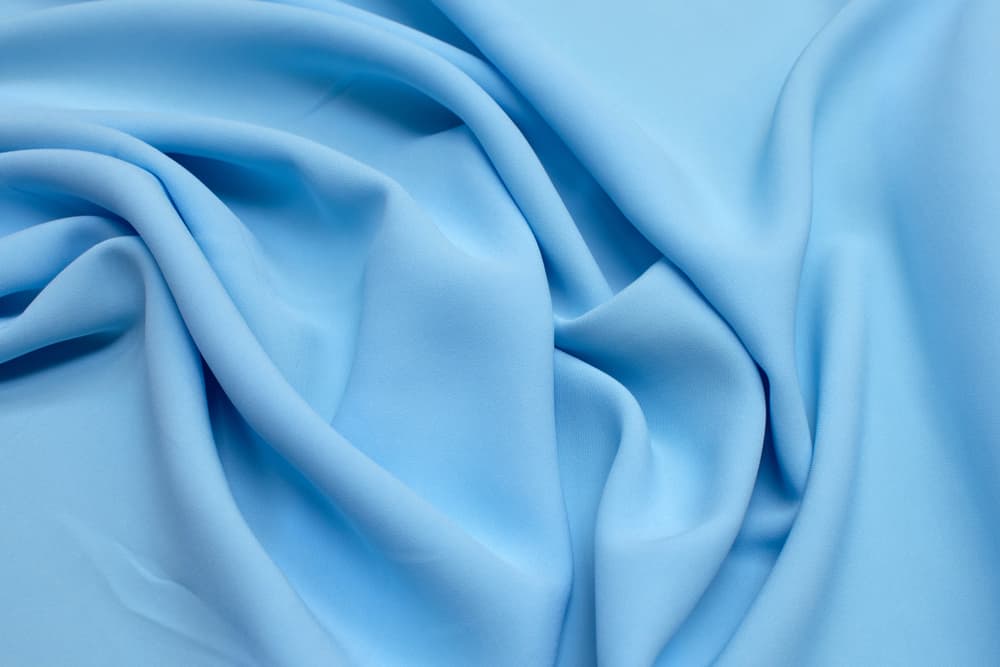
This material is often overlooked and misunderstood. This is probably due, at least in part, to its versatility. It can be adapted to resemble a host of other fabrics — wool, silk, and cotton, to name a few.
This textile comes from natural materials, primarily cellulose fibers found in wood pulp. However, because it needs chemicals to be converted into a fabric, it is considered synthetic. The most common variety of rayon fabric is called viscose.
Similar to cotton, it’s a frequent component of sportswear because it’s lightweight and breathable. Underwear, blouses, and dresses are also made of viscose in many cases. The soft material absorbs moisture well. Other types of rayon include lyocell and modal.
This fabric has its downsides too. It’s not especially durable, so machine washing can take a toll on it. Care instructions depend somewhat on the material it’s blended with, so check labels carefully. When in doubt, or unless otherwise directed, hand-washing is recommended.
Nylon

Nylon is a potentially heavy, polymer-based material used in everything from stockings to umbrellas. In textile manufacturing, it’s often combined with other compounds to achieve varying consistencies, which is what makes it so versatile. Nylon was introduced in the 930s as an alternative to silk.
It was manufactured primarily for making tents and parachutes for World War II armed forces. Today, it’s a common ingredient in swimwear, track pants, yoga pants, and the like. It’s lightweight and relatively resistant to heat and cold, although it can melt when exposed to extremely high temperatures.
Other drawbacks of nylon: It’s flammable and doesn’t absorb water. But when it comes to sportswear and other attire, it’s a great choice because it is easy to wash and dry, making it low maintenance.
Acrylic

Like many synthetics, acrylic is derived from fossil fuels. The synthetic fibers come from plastic threads, although the fabric doesn’t feel like plastic. Acrylic fibers have to be washed, dried and cut before they can be turned into thread.
They’re usually combined with other types of material to create a textile blend. This combination can lower the cost of material, as many natural fibers are more expensive on their own than when they’re combined with a cheaper synthetic. Blending acrylic with other materials can also make it somewhat less flammable. If acrylic does ignite, putting out the fire can be extremely difficult.
Acrylic looks and feels similar to wool. It’s soft, lightweight, and retains warmth well. Acrylic is frequently woven into wool or cashmere. Hence, it’s often found in socks, sweaters, hats, and knitting yarn. Like nylon and polyester, acrylic repels water, making it a good material for an outer garment. This property makes the material more prone to static cling. It can also harbor odor-causing bacteria.
Natural Fibers
Cotton
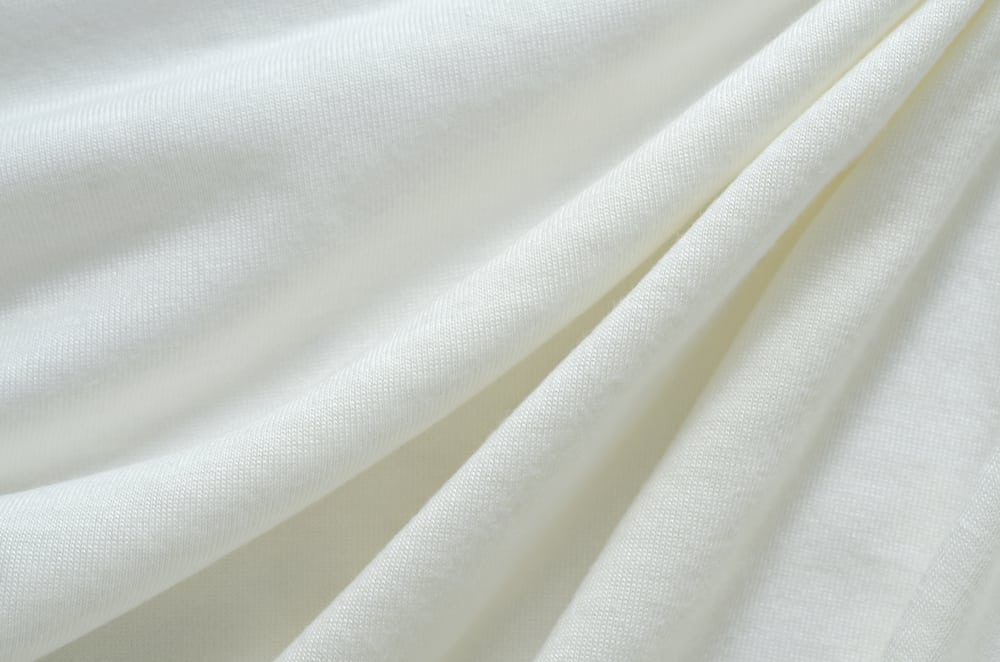
Cotton fabric is one of the oldest fabrics around. This natural material comes from cotton crops grown all over the world. Unfortunately, the use of cotton in the textile industry is declining as synthetic materials take up a growing share of the market. Cotton is relatively inexpensive but is prone to shrinking when washed.
Linen
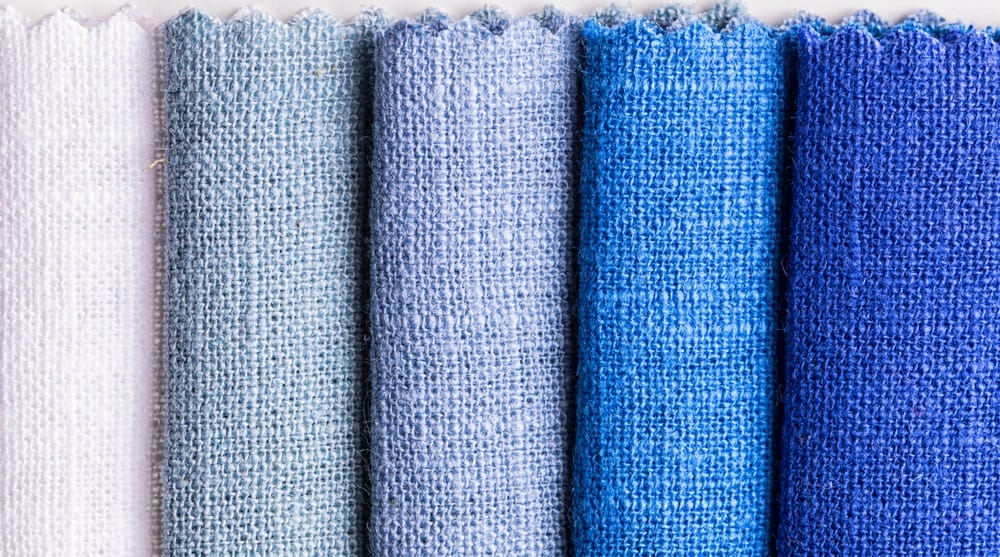
Like cotton, linen comes from natural fibers. It’s a lightweight, breathable fabric. Linen fabric comes from the flax plant, which takes longer to harvest than cotton. The fibers have to be stored for extended periods of time to soften them.
While linen has a lot in common with cotton, it’s not as stretchy. But it is more durable. Its fibers have a somewhat rough texture due to its flax origins. Like cotton, linen is highly absorbent. Both fabrics are prone to wrinkling. Hollow linen fibers make the material ideal for keeping cool during the summer. If you wear linen during the chilly winter months, though, you’ll probably want to layer it to maintain warmth.
Wool
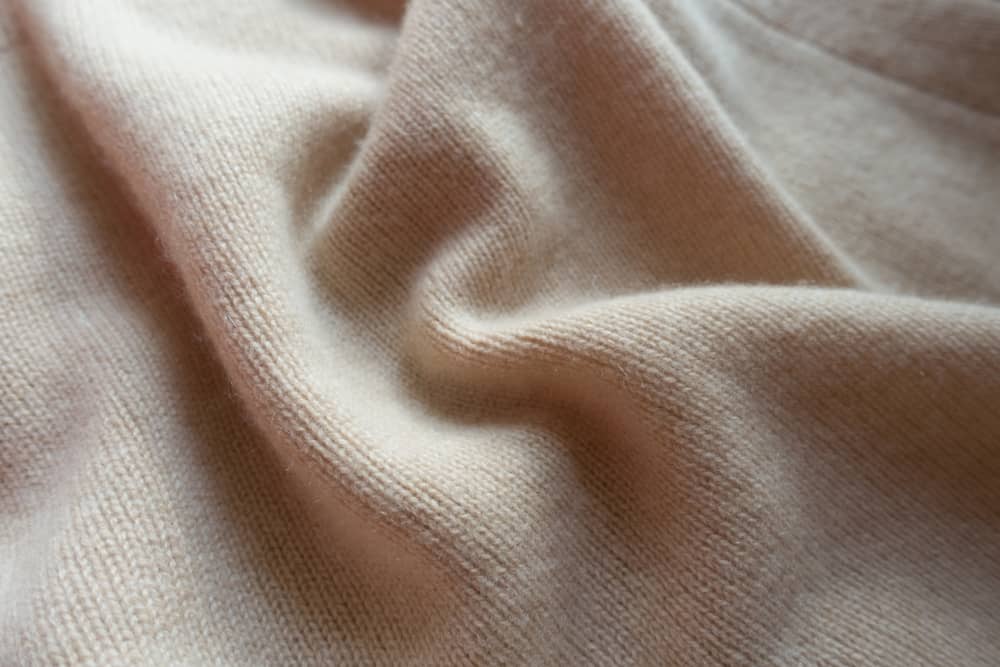
Wool fabric is another natural material that is a readily available textile, although a relatively small percentage of clothing items are made with it. Most people associate wool with sweaters, and this material is certainly more prevalent in cooler climes. Besides apparel, it is regularly used for carpets and furniture. One highly sought-after type is merino wool, which is especially soft. Another type of wool is cashmere.
Silk
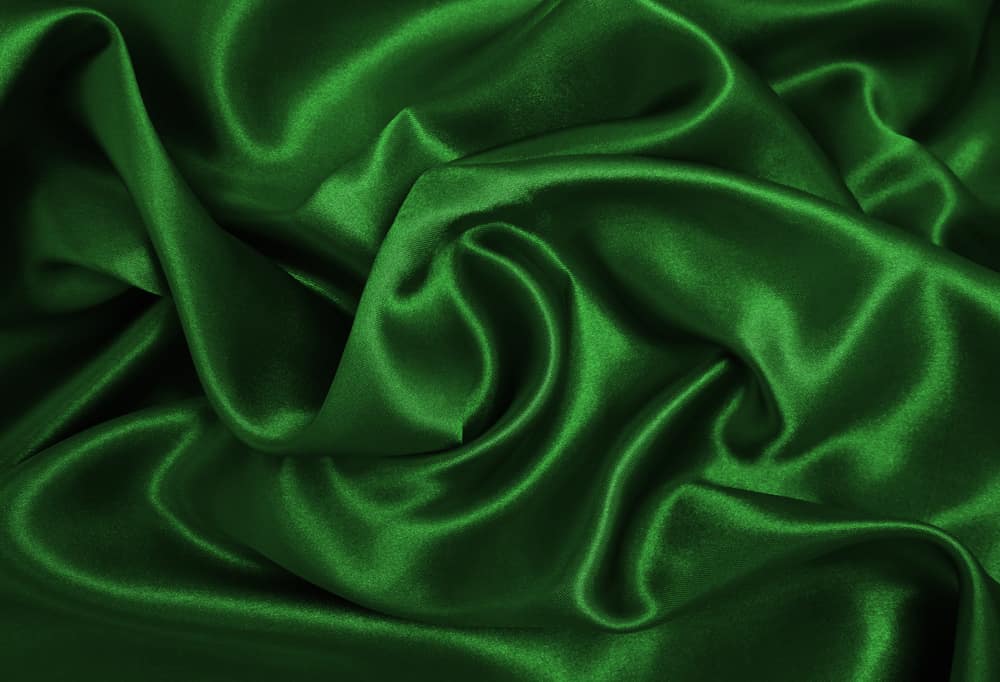
A popular dress and high-end clothing material, silk is a natural fiber that has been around since ancient times. Although it’s a costly material used to make higher-end clothing, its origins are surprisingly humble. The material is actually derived from the thread produced by silkworms. Silk production is a highly lucrative industry, so while there’s less demand for some other natural materials, this one will likely hold onto its popularity.
Cellulose Fibers
When this material first arrived on the fabric scene, it was extracted from plants such as bamboo. It was crushed and pulped in much the same way that polyester is produced. Viscose is the most common type of cellulose fiber. It has a silky feel.
Bast Fibers
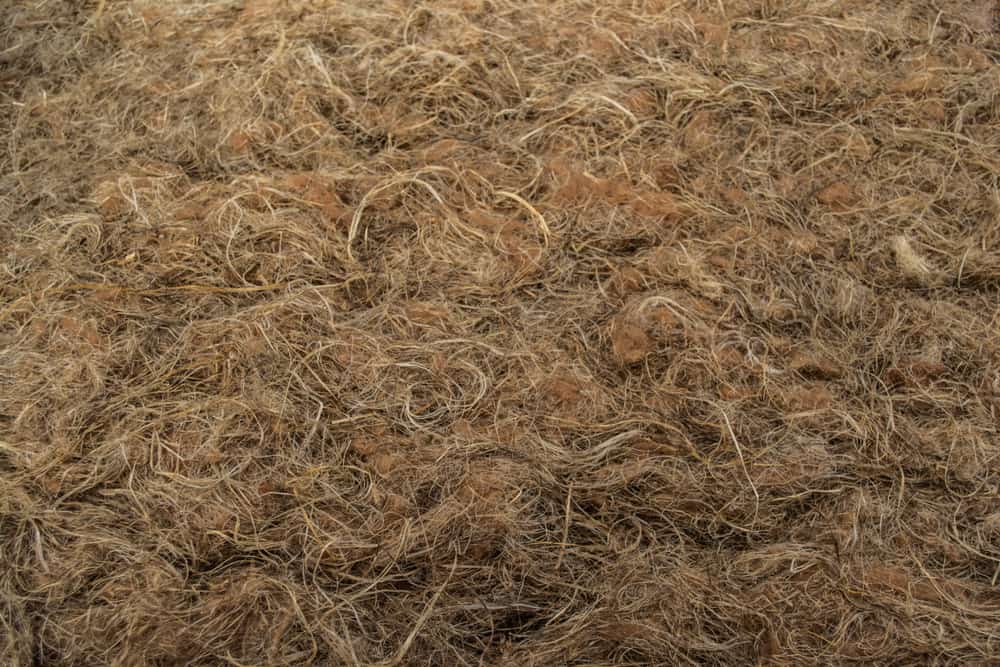
Bast fibers are also made from natural materials, so they’ve been in use for thousands of years. Baste fibers come from the inner bark of plants. Because the process to treat them and prepare them for weaving is somewhat tedious, they are not often used in apparel, although some articles of clothing certainly do contain them. Instead, bast fibers are more frequently used to manufacture rope, paper, and carpets.
Leather
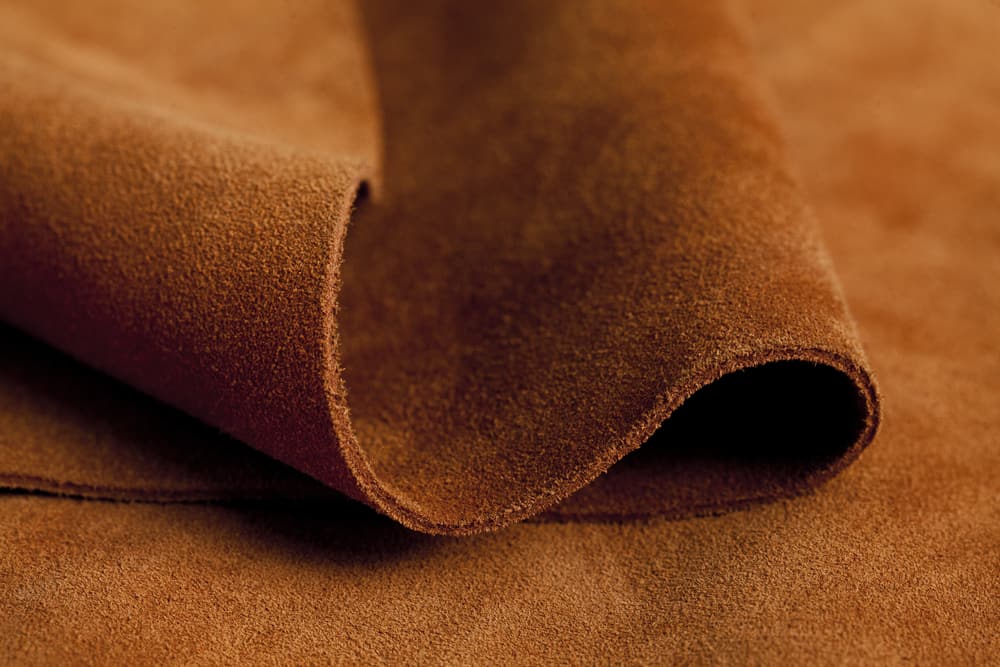
Leather is another natural fabric that has been in use for quite a while. It is most regularly derived from bovine animals like sheep, goats, and cows. However, leather can also be made from the skins of snakes and crocodiles. This durable, versatile material is a staple in clothing and various accessories like belts.
Sateen
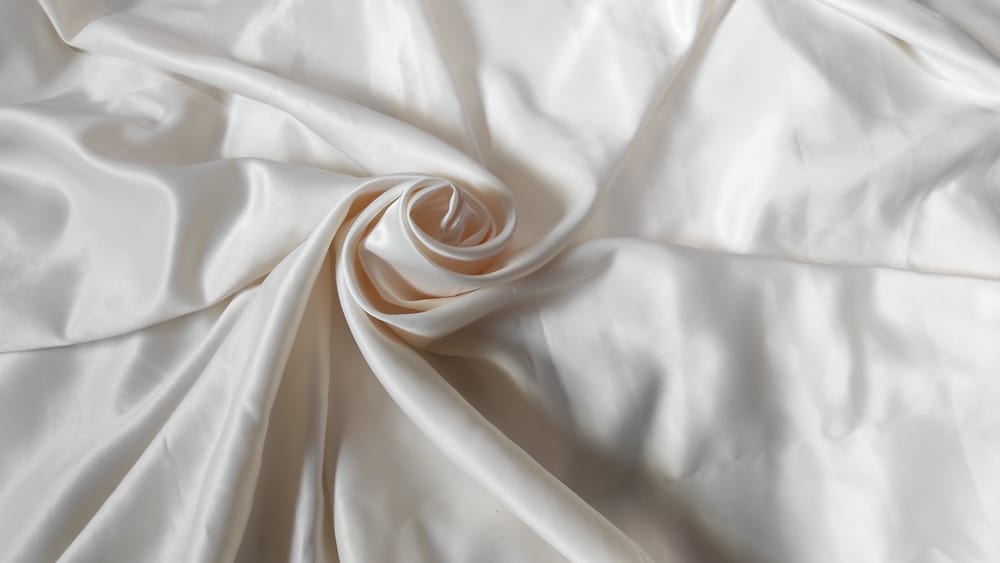
And then you have sateen, which many people confuse with satin. A satin weave with cotton worked into it is sateen. Like satin, it has a four-threads-over and one-thread-under type of weave.
Sateen comes from short-staple spun yarns like cotton and rayon. The yarns are treated to make them feel silky. Sateen is more durable than satin, so it’s recommended for items that are likely to be subjected to some wear and tear. Thankfully, this woven fabric is machine-washable. Sateen is also easier to work with when you want to make any color modifications to it, including dyeing and printing. (You can bleach it, too).
Satin
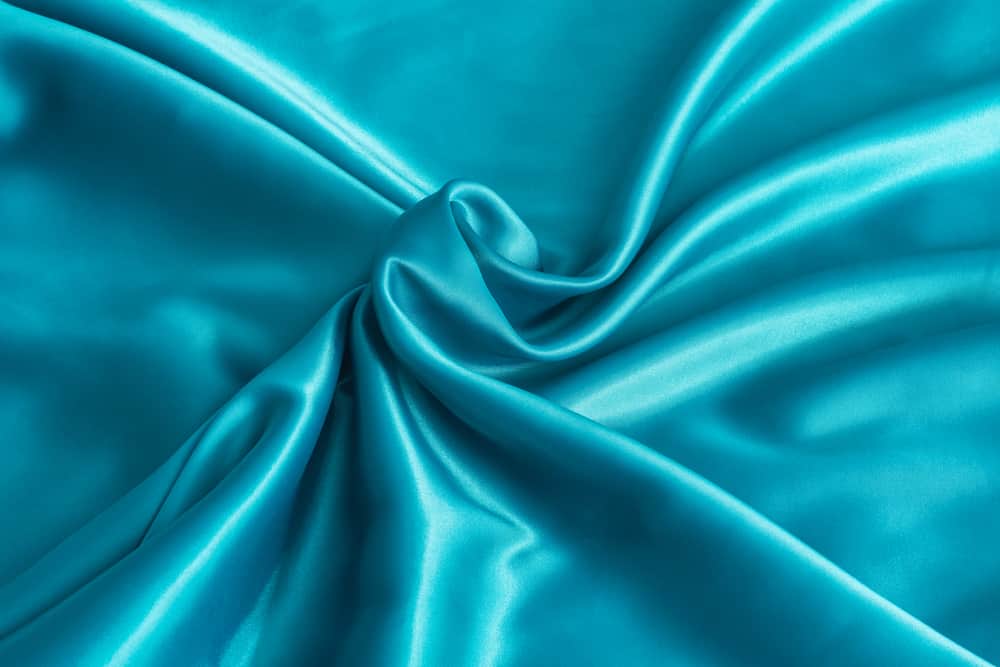
Satin fabric has a long history of being associated with luxury and traces its roots back to ancient times. It’s used for a variety of clothing and accessories, such as a bridal dress or evening gown, as well as lingerie and bags. Satin weave consists of four threads over and one thread under, which creates a floating effect. Most other materials have one thread sewn over every underside thread. This smooth material comes in several types, too.
Satin is somewhat higher-maintenance than sateen and not as versatile. In many cases, it can’t be dyed or printed on. It’s not always machine-washable. Instead, it requires dry-cleaning or hand-washing.
- Antique. This is a heavy fabric known for its dull luster.
- Baronet. This ranks number one in terms of the most lustrous satin. Frequently used for decorative purposes, it usually comes in bright colors.
- Charmeuse. This is a highly clingy fabric that is especially lustrous on one side but dull on the other. This is a popular fabric for dressmaking.
- Crepe-back. This is another dressy fabric that’s also reversible, so you can choose to display either a smooth, satin weave or a crepe weave.
- Duchess. This satin has a dull luster, but its stiffness allows it to hold its shape well. It’s commonly used for bridal wear.
- Lucent. This is actually a sateen material that shimmers beautifully.
- Messaline. Messaline is soft and light. Used mostly for dresses, it’s made of silk or rayon.
- Monroe. This fabric has a sateen face and is medium-weight. Because it’s tightly woven, it holds warmth well, so it’s ideal to wear when the weather gets a bit chilly.
- Panne. Panne is heated under pressure to give it a fine luster. Panne is typically used for evening wear.
- Slipper. Slipper has a matte surface and is lightweight.
Gingham
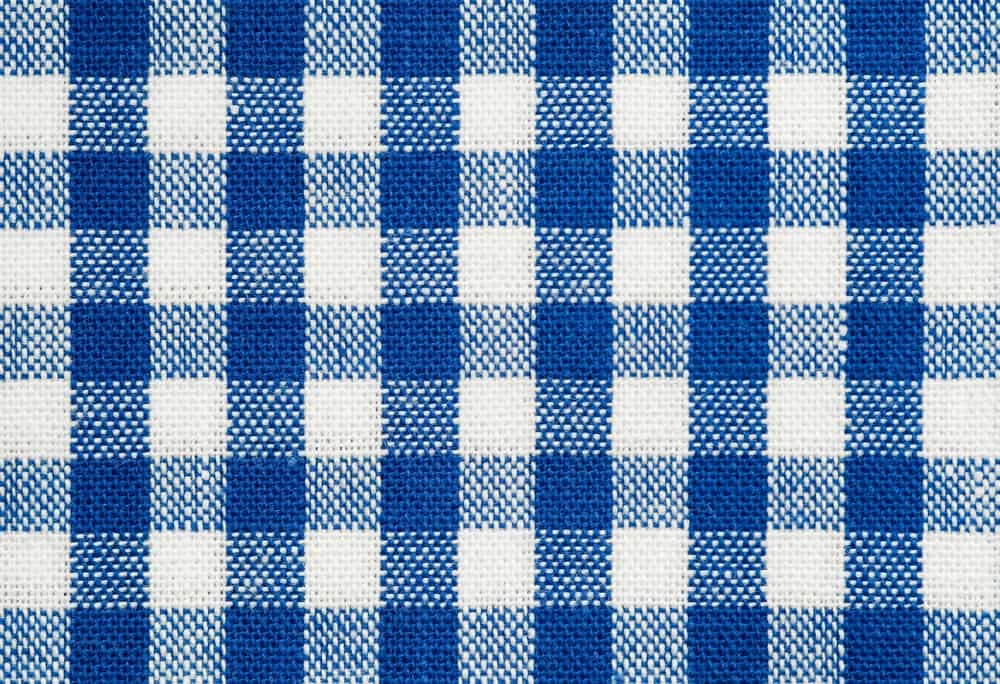
Gingham consists of cotton or a cotton blend. Dyed yarn is set in a plain weave so that it forms a checked pattern. A lot of men’s shirts are designed this way, although you can certainly find both men’s and women’s apparel in this style. It’s popular for tablecloths, too. Gingham patterns usually come in two colors — red and white and blue and white are the most popular combinations. The checks may come in many different sizes. Gingham is a reversible, versatile, and low-cost material.
Muslin
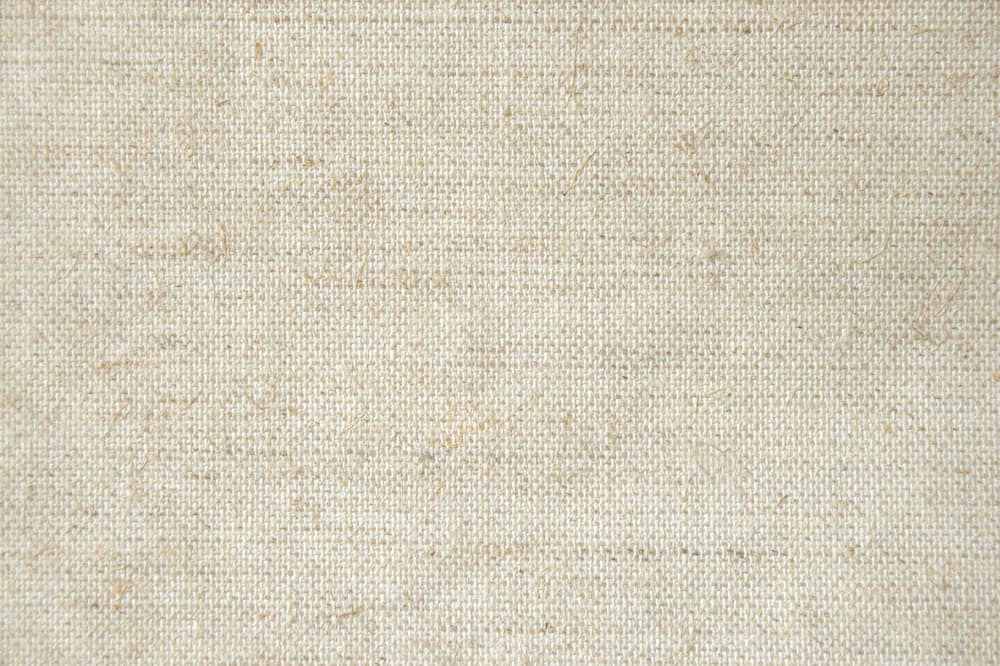
Muslin is a cotton material that is loosely woven. It’s produced using a plain weave. With this method, a single warp yarn is woven alternately under and over a single weft yarn. This is the material often used in prototypes before cutting “the real thing.” Muslin is lightweight, has a gauzy look, and is easy to work with.
Organza
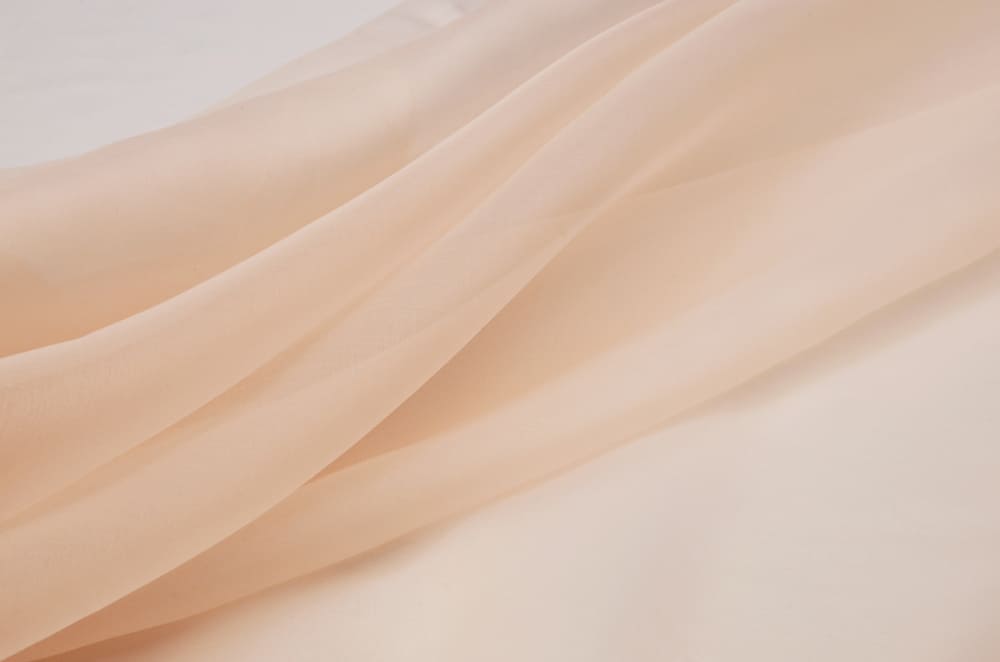
Organza is another plain-woven material made from either silk or synthetic fibers. While synthetics are more durable, organza in any form is delicate and therefore susceptible to fraying and tearing. The fabric has tiny holes in it, which are the minuscule spaces between the weft and warp threads.
Interestingly, the number of holes per inch reflects the quality of the organza. With its shimmery, translucent look, it’s no wonder this material is especially popular for evening wear and wedding gowns.
Suede
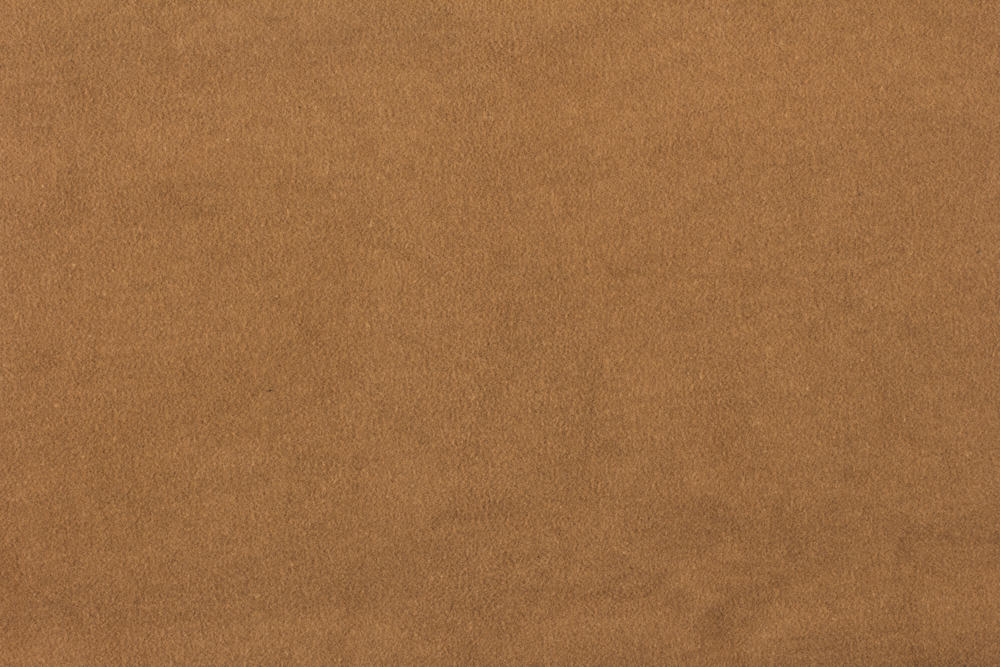
Suede is a type of leather, made from the underside of animal hides or skins. Suede can be fashioned from lambs, deer, goats, and even pigs. It’s thinner and weaker than standard leather. But it’s still highly durable. And because of its thinness, this type of leather is remarkably easy to work with when you’re sewing various types of clothing. It’s used not only for jackets and vests, but also for bags and accessories, like belts.
Tafetta
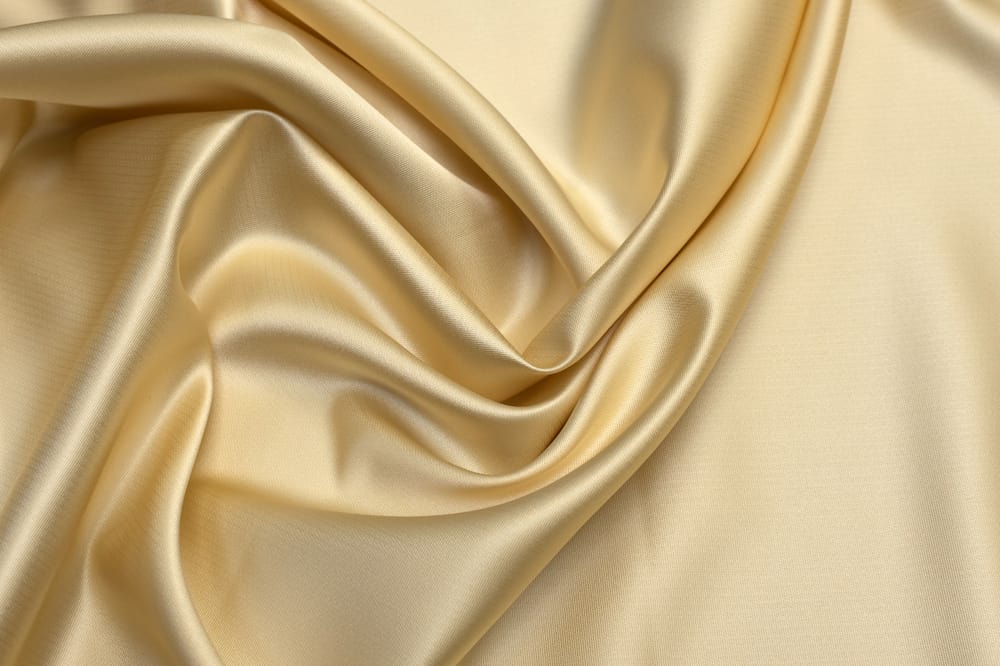
Taffeta is a plain-woven material that’s frequently derived from silk. Sometimes, it’s also made from nylon, polyester, acetate, or some other synthetic. The type of fiber used impacts the weight and sheerness of the fabric. It can be used as a lining material or a decorative add-on. When purposed for decoration, it’s a popular choice for evening wear.
Toile
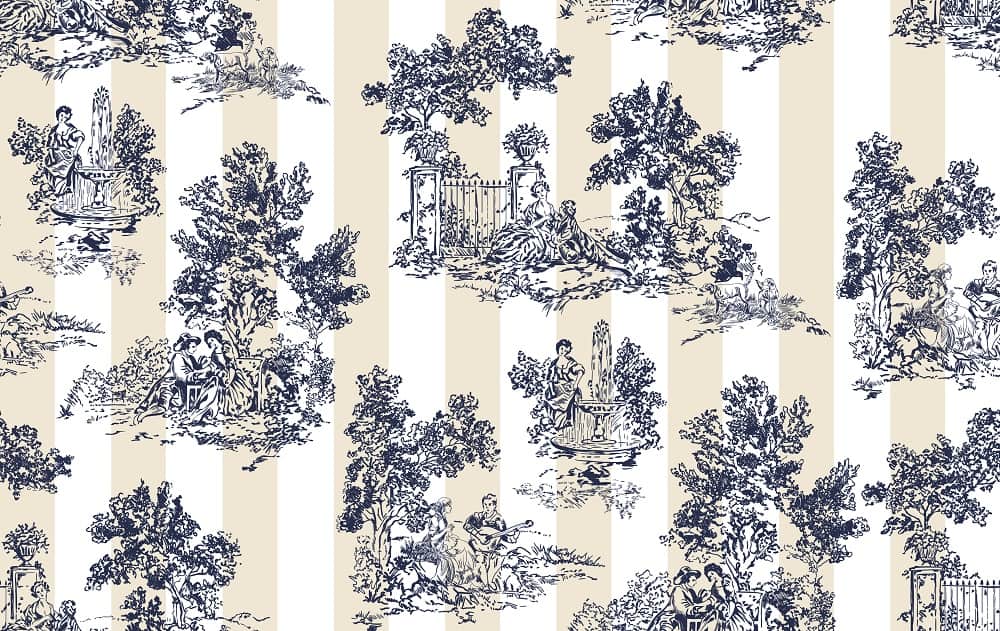
Otherwise known as toile de jouy, or simply toile, this is a type of linen that stands out from other varieties because of the pastoral or romantic patterns that are printed on it. These patterns come in a single color — usually black, red, or blue — and appear on fabric that is unbleached. You can find toile in bedding, window treatments, upholstery, and of course, clothing.
Tweed
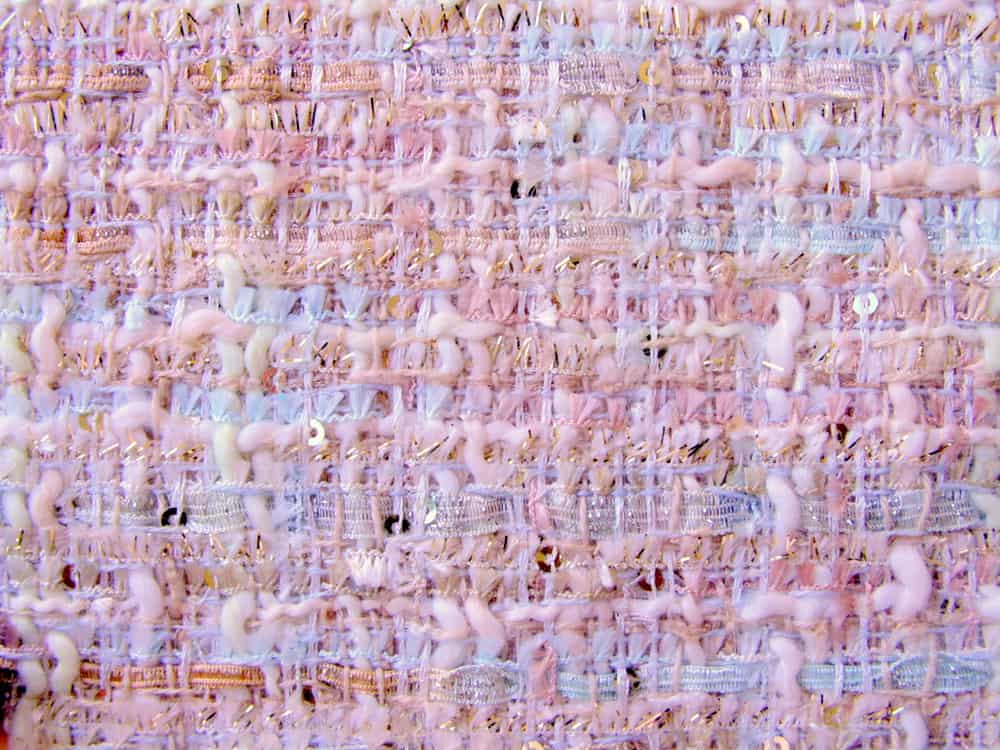
Tweed is a woven, usually wool-based fabric that has a rough, stiff texture. Tweed consists of plain weaves or twill weaves. It’s warm, durable, and often comes in multi-colored patterns, sometimes consisting of vertical lines and small squares. Tweed was originally used to fashion all kinds of hunting gear. These days, you’ll find tweed in many a suit or jacket, as it remains an oft-used material.
Knitted Fabric
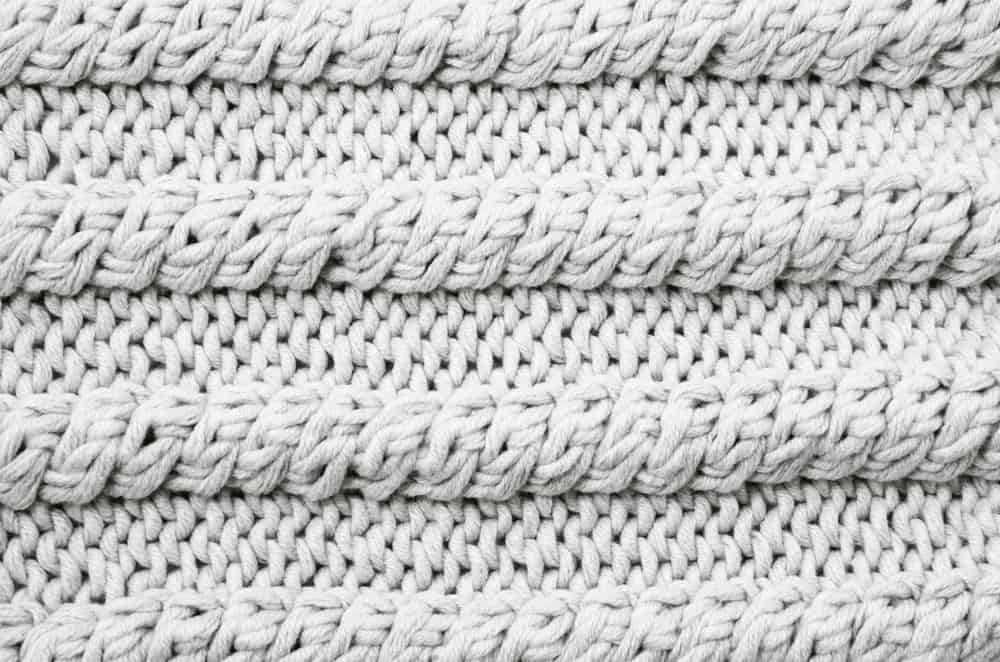
Knitted fabric is a popular selection for everything from sportswear to evening wear. It’s relatively lightweight and has some stretch, so it moves with you. Here’s a breakdown of the various types of knit fabric.
Jersey Knit
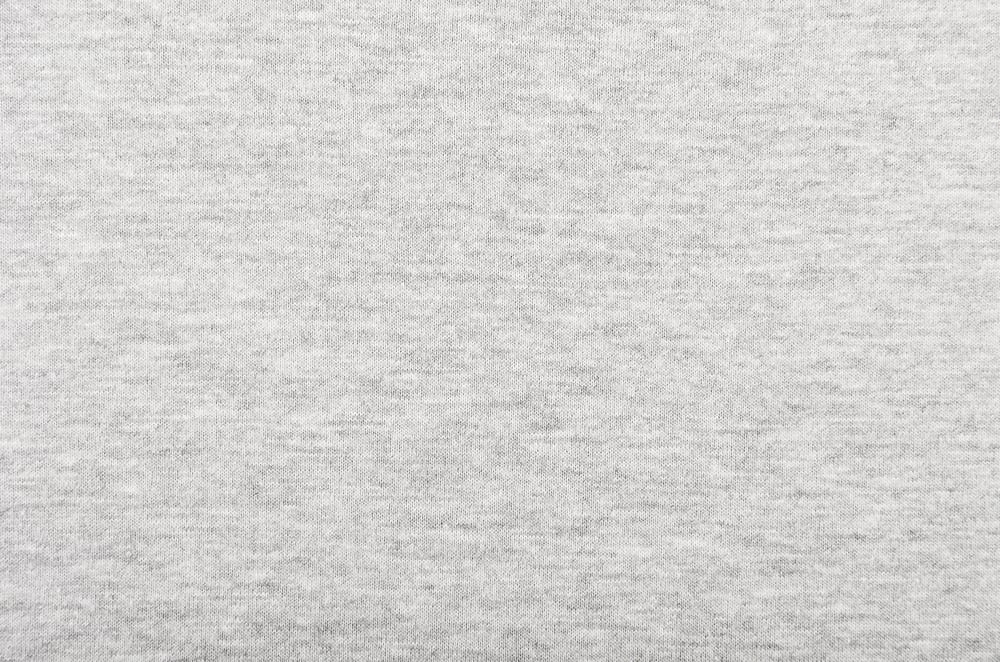
Jersey knit is the most common textile in the knitted category. It’s relatively lightweight and is a bit stretchable. Its stretchiness is often enhanced by adding spandex.
Jersey comes in just about any fiber, from hemp and cotton to rayon and tencel. It’s easy to identify this material because it has distinct right and wrong sides. If you have a T-shirt made of jersey knit, you can tell right away if it’s turned inside out.
Because it’s so comfortable and versatile, jersey knit is a go-to for sewing tees. Because of its draping capabilities, it’s also regularly put to work for dressmaking. Jersey can be a little more difficult to sew than some other materials because it tends to curl at the edges if you pull on it.
French Terry
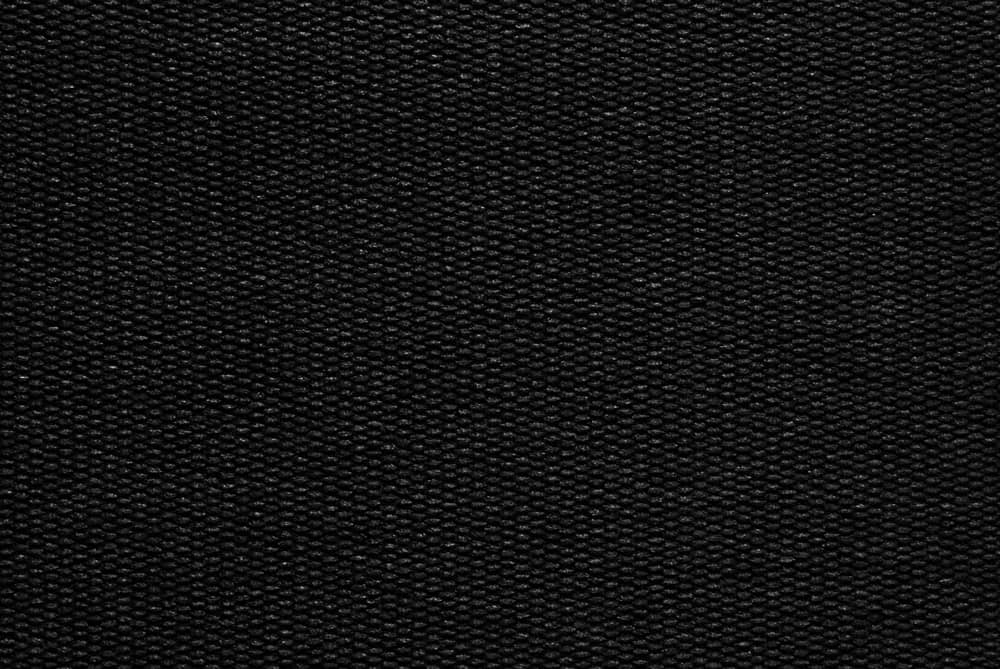
This fabric, often confused with terry cloth, is a staple of hoodies and other types of lounge-wear. Since it’s highly absorbent, it’s often used for moisture-wicking sportswear. You can identify French terry by its loops and piles of yarn on one side (usually the inside of clothing). Its outer surface has a smooth, soft finish.
Fleece Knit
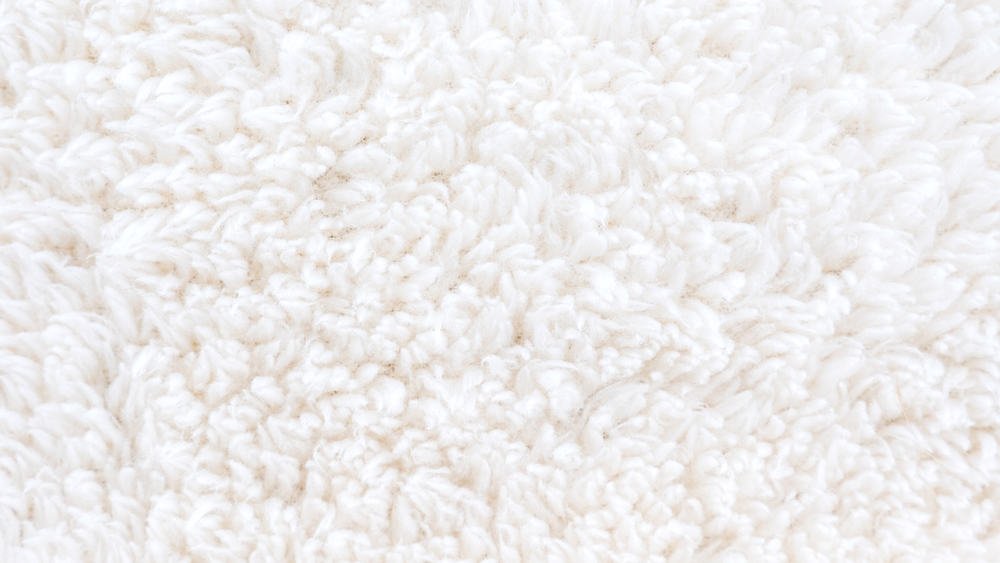
Fleece is a thick, stretchy fabric that dries quickly. It’s also incredibly warm. It’s durable and comes in just about any fabric fiber you can think of, from wool to rayon. Fleece is a common component of activewear and other casual apparel. It has a reputation for being comfortable and versatile.
Rib Knit
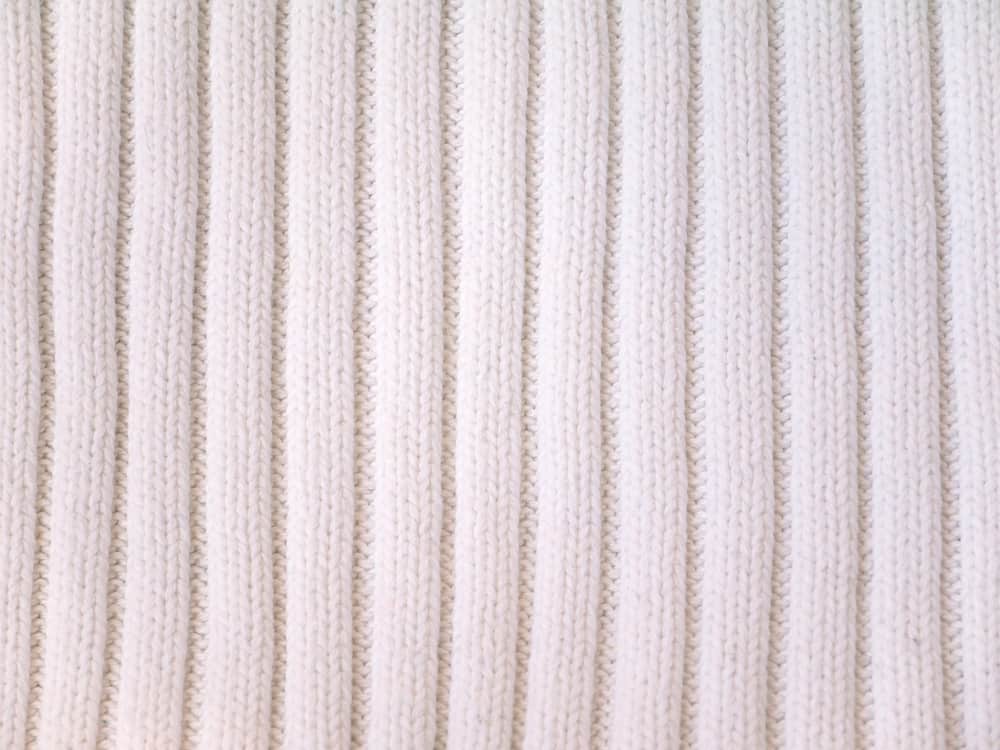
As its namesuggests, ribbed knit material has vertical raised textured lines. Sometimes, it’s just called ribbing. Ribbed knits come in a few different types — 1 x1 and 2 x2 are the most common. That means one knit for every purl stitch or a sequence of two knits and 2 purl stitches.. I’ve also seen 3 x3 rib knit.
Rib knit has more stretchiness crosswise than lengthwise and lies flat on one side. Rib knits are often incorporated into turtlenecks, cuffs, and the bottom edges of sweaters. Some sweaters are made entirely of this knit fabric. It’s a good neckline material, and you can find it in most fibers. Rib knit is heavier than jersey and not as smooth. It also doesn’t have right and wrong sides the way jersey fabric does.
Interlock Knit
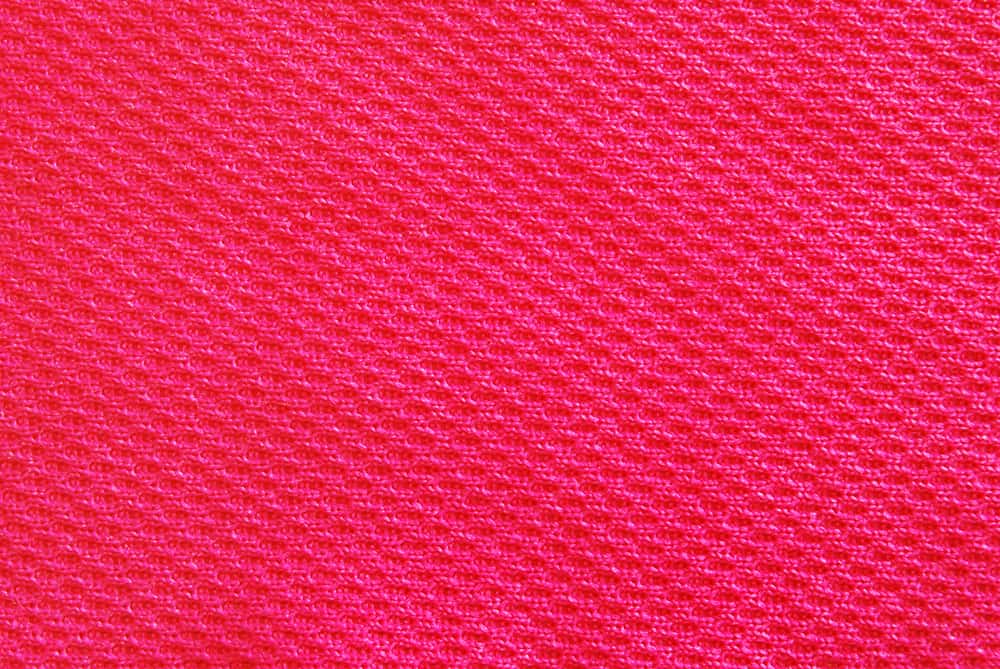
Interlock knit is also called double-faced rib, as it looks a lot like ribbed fabric and requires two needles to make. Essentially, it looks like two single-knit layers piled on top of one another. It comes in just about any fiber and is ideal when you want to sew tank tops, skirts, and pants. It’s heavier, thicker, and less stretchy than jersey. Since it’s reversible, there are no right or wrong sides. Plus, interlock knit is the most stable of the knit fabrics described here.
Somewhat Lesser-Known Clothing Fabrics
The materials mentioned above are the most common apparel fabrics. Here are some others you might be interested in. If you don’t come across them at your local fabric shop, you can find them online.
Bamboo

This comes from bamboo grass pulp. It’s strong and lightweight, capable of keeping you cool in summer but warm in winter. It’s moisture-wicking and has anti-bacterial properties, which cuts down on odors.
Chenille
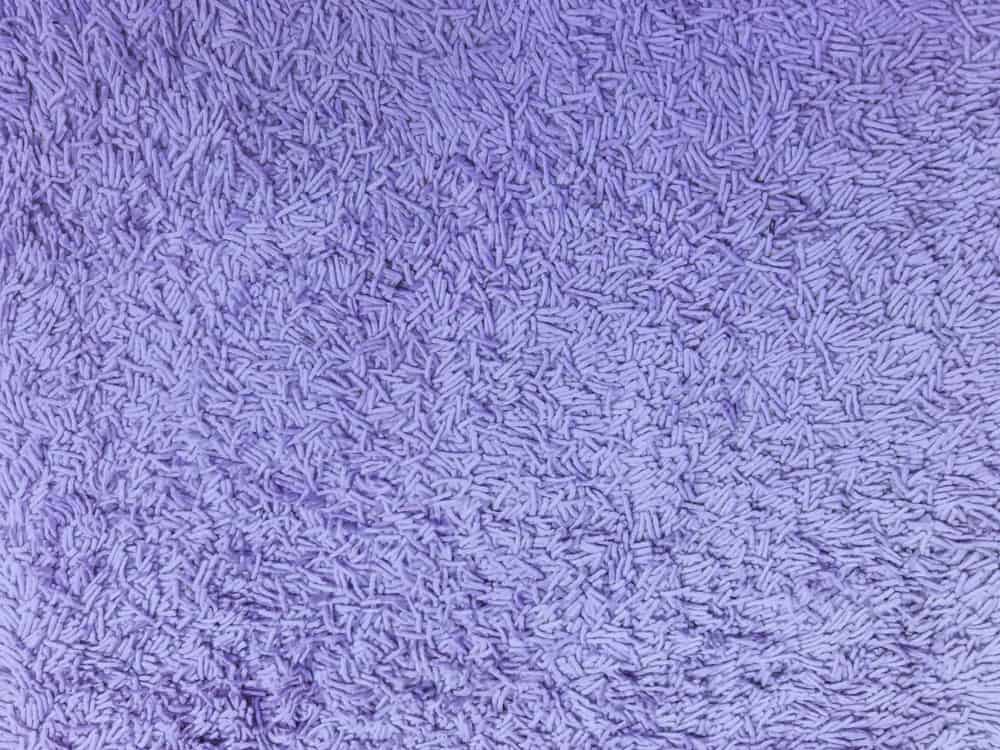
This chic fabric is made either from cotton or a blend. Oddly enough, the name for this material comes from the French word for caterpillar and, as you might expect, it originated in France. It’s soft and fuzzy, perhaps having a texture similar to the crawling creature it’s named for.
Chiffon
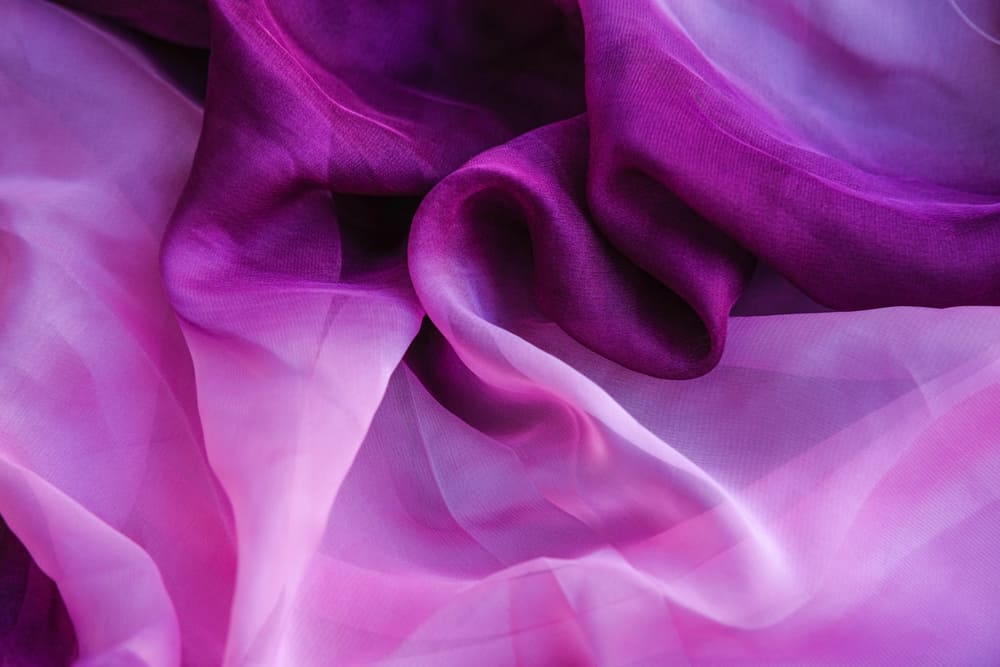
This is a soft, lightweight fabric made from a combination of materials — silk, rayon, polyester, and more. It’s produced from twisted filament yarns and has an elegant feel and appearance.
Chino
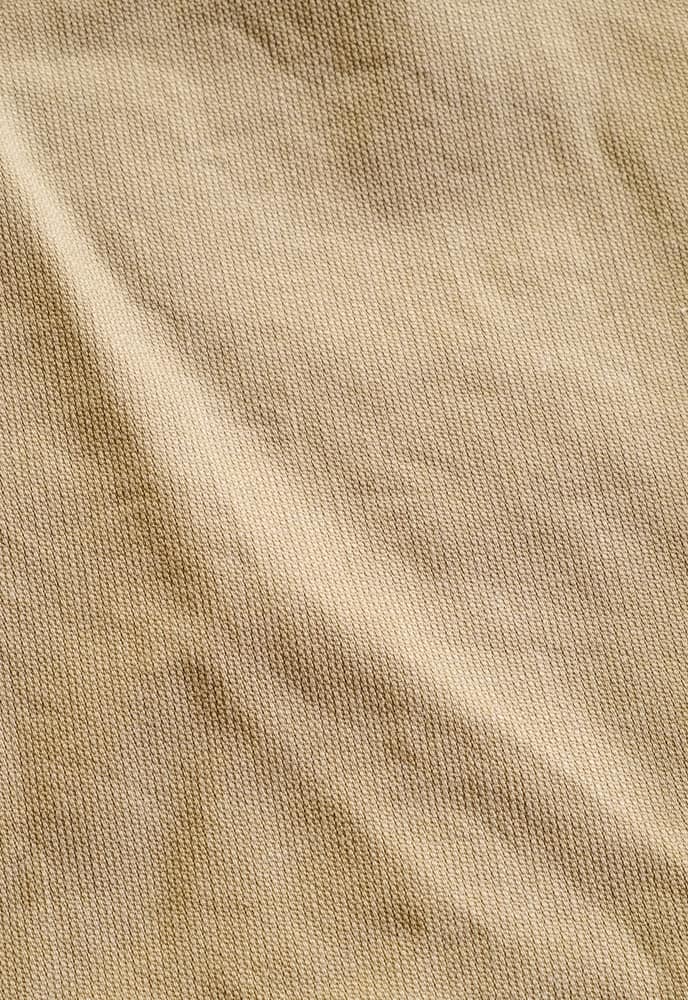
Chino is a twill weave material made from cotton. Chino often appears in khaki, but you can also find it in olive, black, or navy. Many pairs of trousers are made of chino.
Chintz
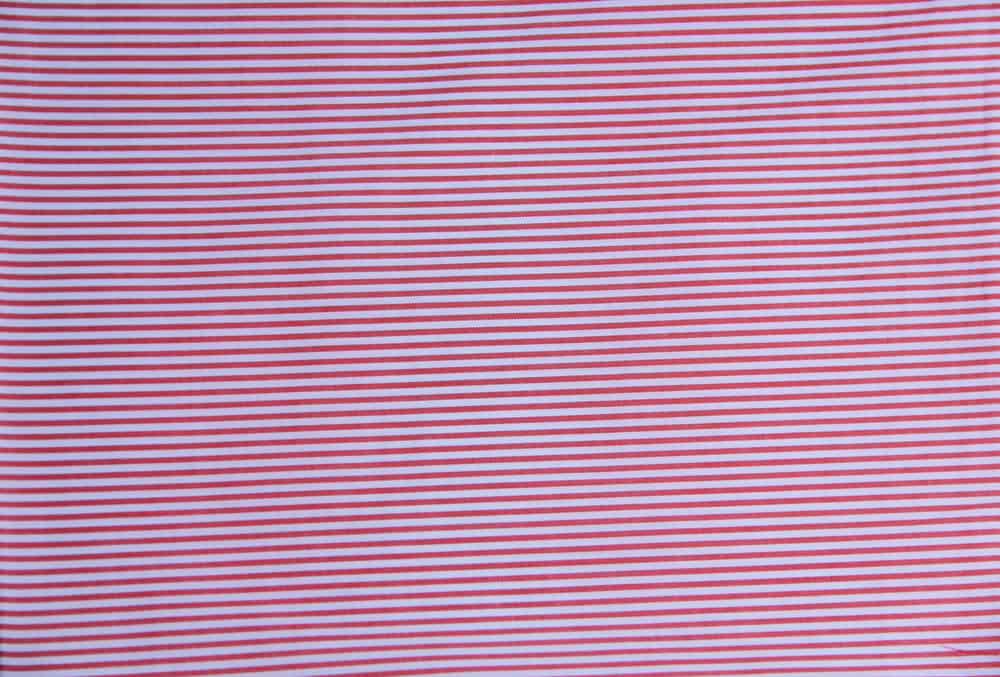
Chintz often comes in bright prints and colors, especially florals. This fabric is a glazed cotton plain weave.
Corduroy
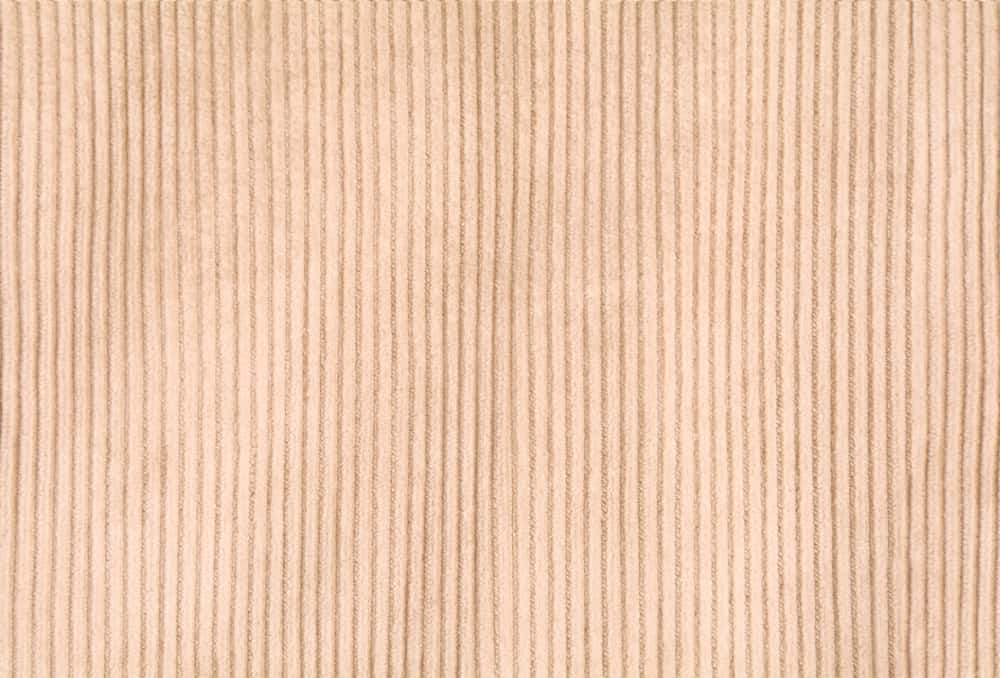
Corduroy is usually derived from cotton. It’s easy to identify because of its lengthwise ridges. (And here’s a bit of trivia for you: Those ridges are called wales). The cotton/polyester blend of corduroy is resistant to wrinkles.
Crepe
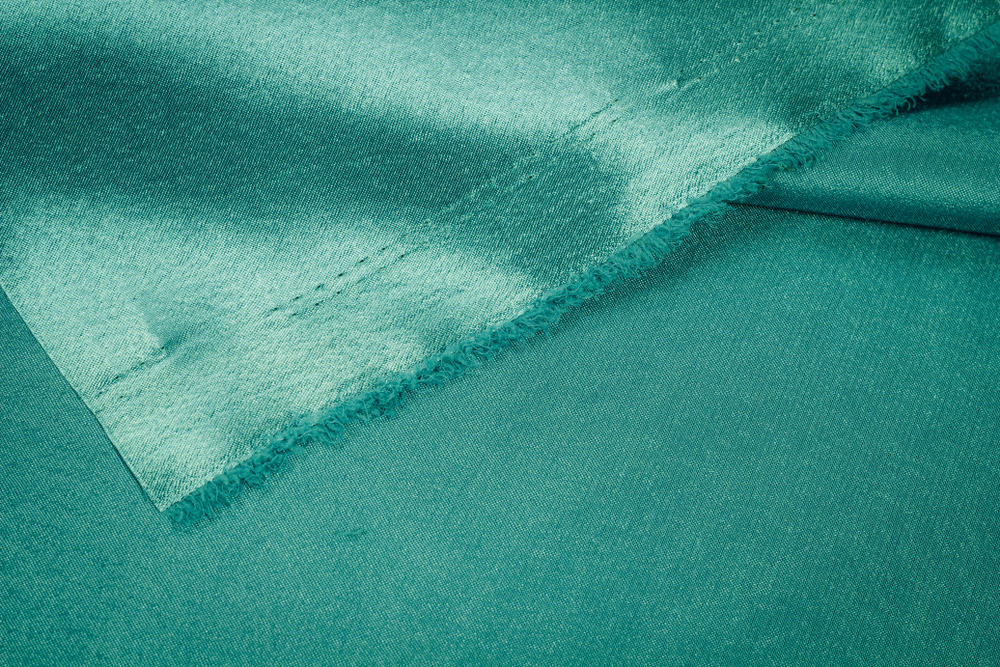
Crepe has a unique, somewhat bumpy appearance. Light to medium in weight, it’s used for pants, suits, and dresses, as well as home decor. Georgette is a type of crepe, usually constructed from pure silk. It is sheer with a wrinkled appearance, complete with a matte finish. You can find georgette in solid colors and prints, especially florals.
Damask
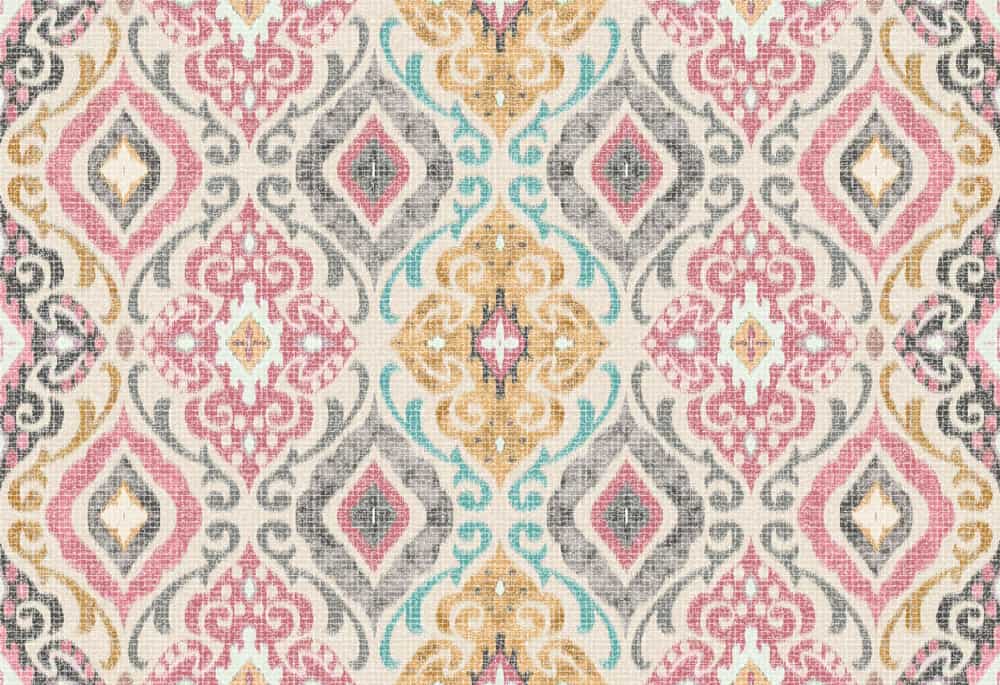
Damask is a weave type used to make geometric patterns or florals. This fabric is usually sourced from linen, polyester, cotton, or other fiber blends.
Eyelet

This material is known for its cut-out designs. You can embroider or stitch around them to keep the fabric from unraveling. Eyelet is made from natural or synthetic substances.
Faille
Faille is a woven fabric derived from silk, cotton, or synthetic materials. This fabric is soft, finely-ribbed, and glossy.
Fiberfill
This is a lining material used in vests, coats, and padded apparel. It comes from synthetic materials.
Gaberdine
This is another twill-weave material that is especially sturdy. It may be derived from synthetic fibers, as well as natural materials such as cotton or wool.
Jacquard
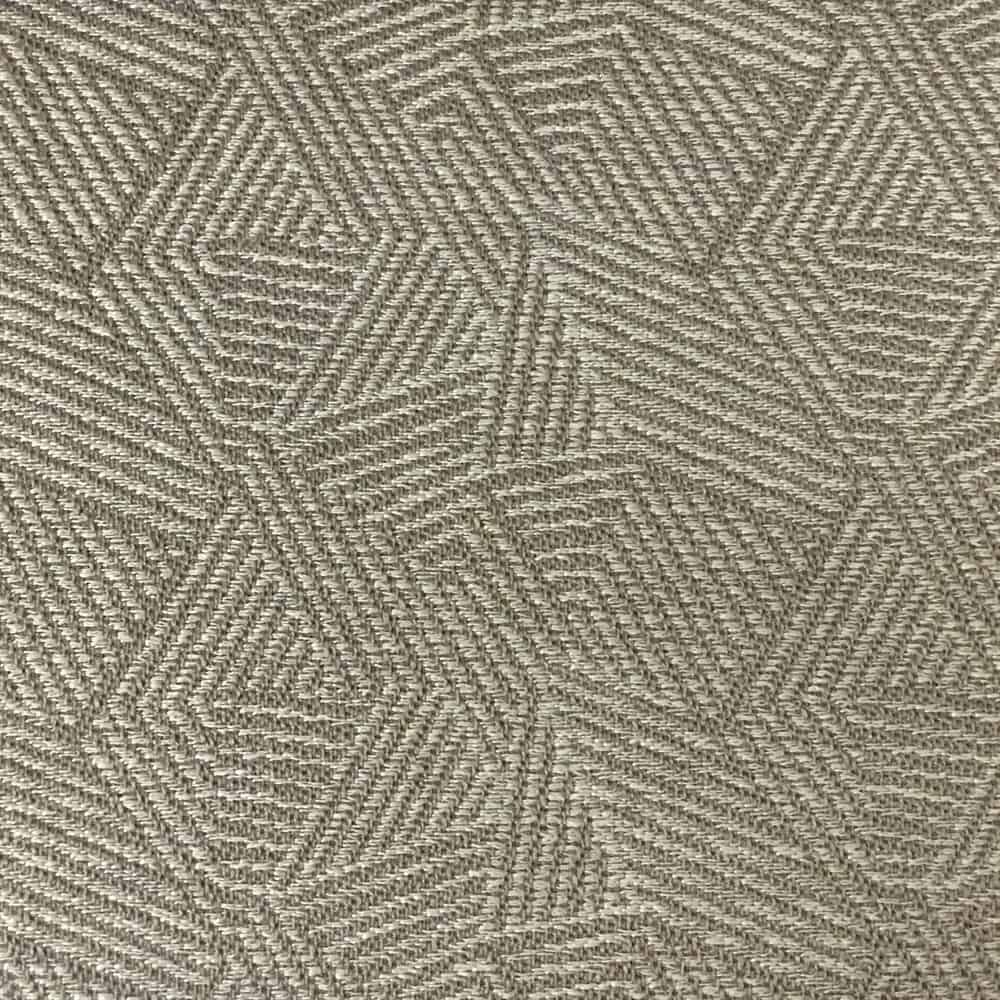
Jacquard refers to any fabric that has a design woven into it rather than printed on its surface. Damask and brocade are two examples of jacquard. You can find this fabric in natural and synthetic varieties. Jacquard knits are also available.
Lace
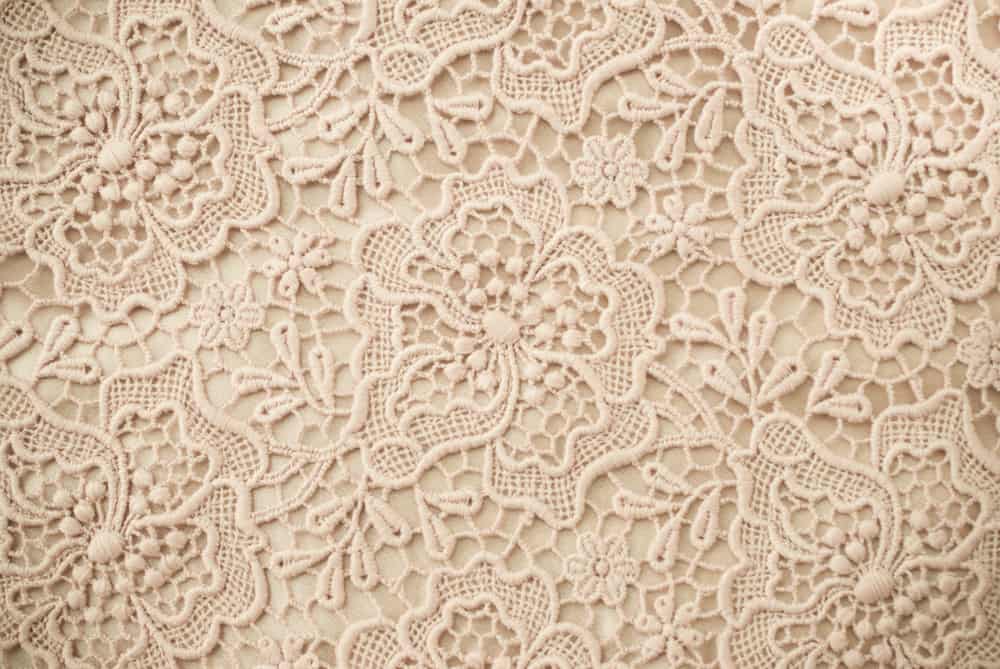
Made with natural materials or synthetics, lace is used for decorative purposes, such as adding embellishments to a dress. You can sew lace on garments by hand or using a sewing machine.
Lame

You can use lame to create designs or fill in the background surrounding them. This woven fabric contains silver or gold threads.
Latex
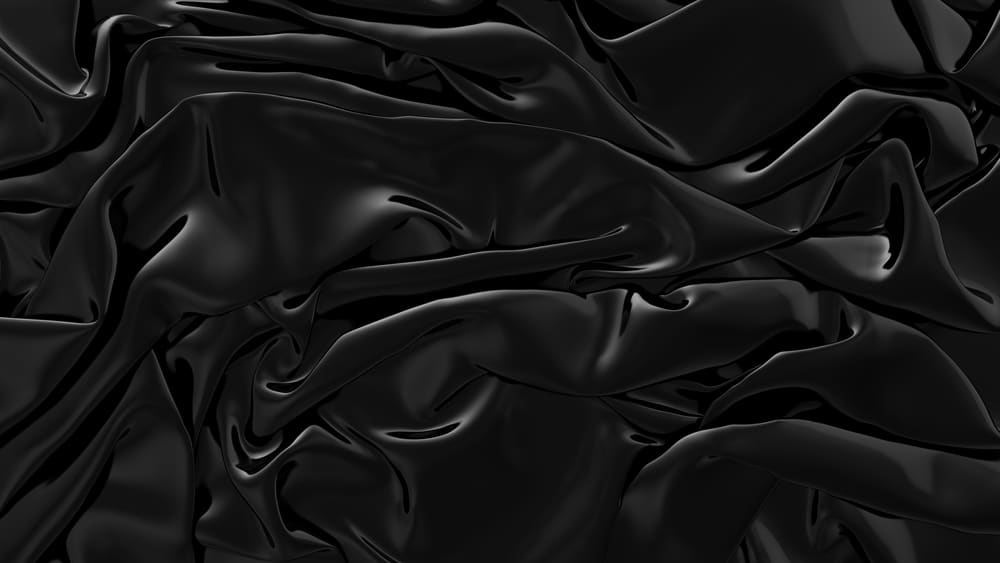
This rubber-based fabric is added to other materials to enhance their elasticity.
Mesh
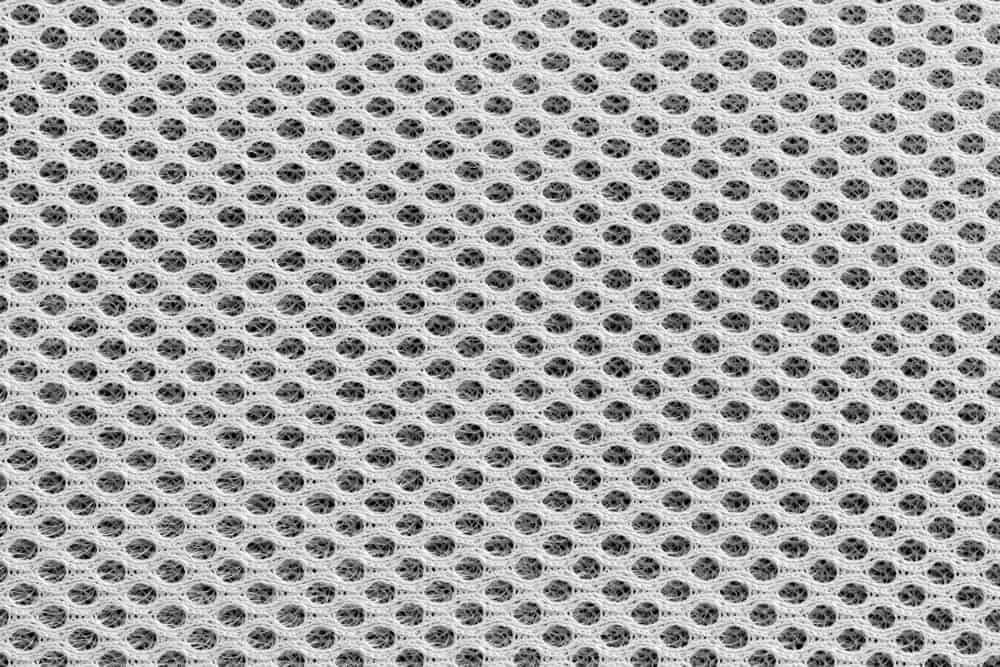
Whether knitted or woven, mesh has a net-like consistency.
Microfiber
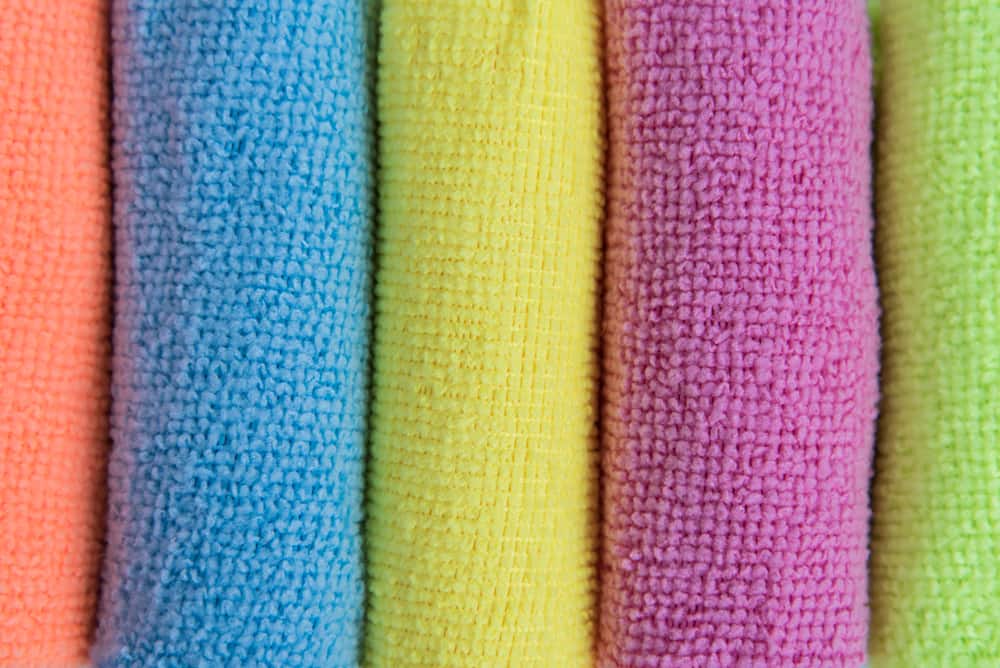
Microfiber is a material we often associate with furniture. But you can make clothing with it, too. In fact, it’s really comfortable to wear. Microfiber usually consists of polyester and nylon.
Micro-Fleece
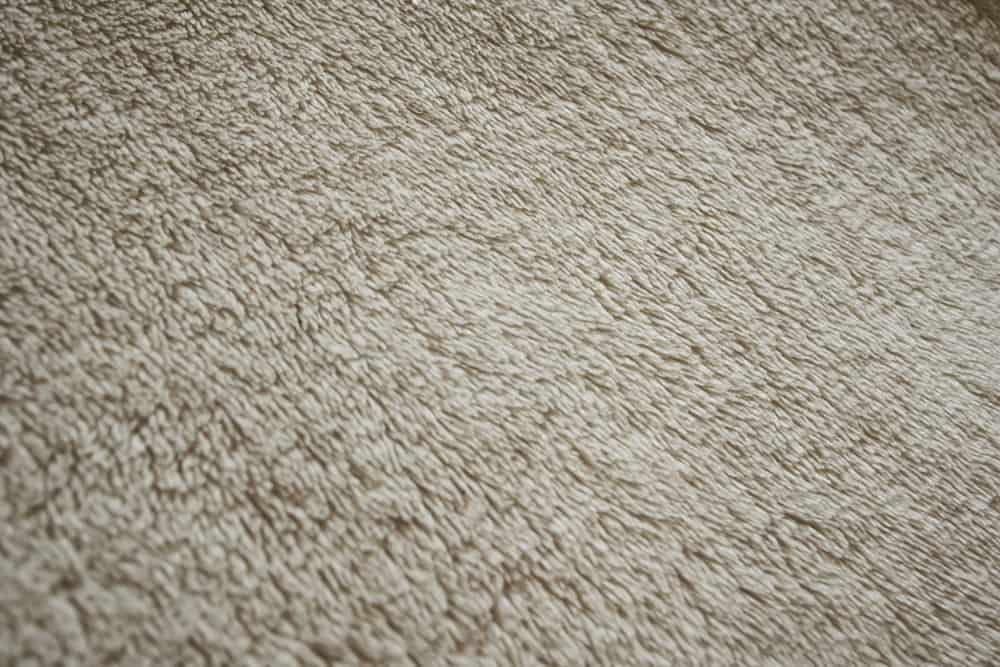
Micro-fleece is a soft, synthetic material. It is similar to wool.
Neoprene
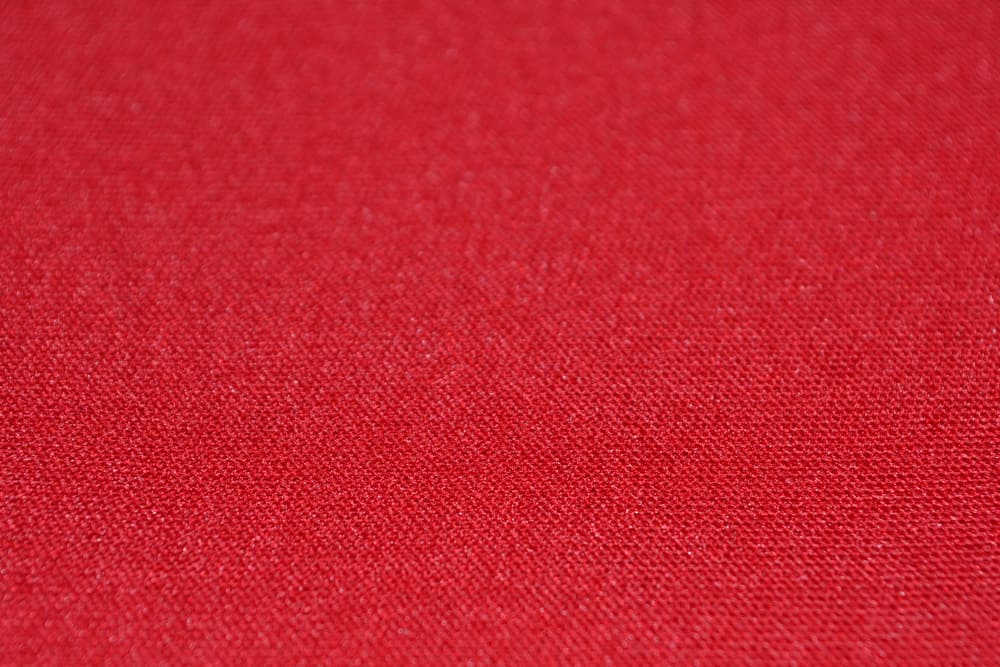
This is a rubber-like fabric frequently found in swimwear and outerwear.
Pique
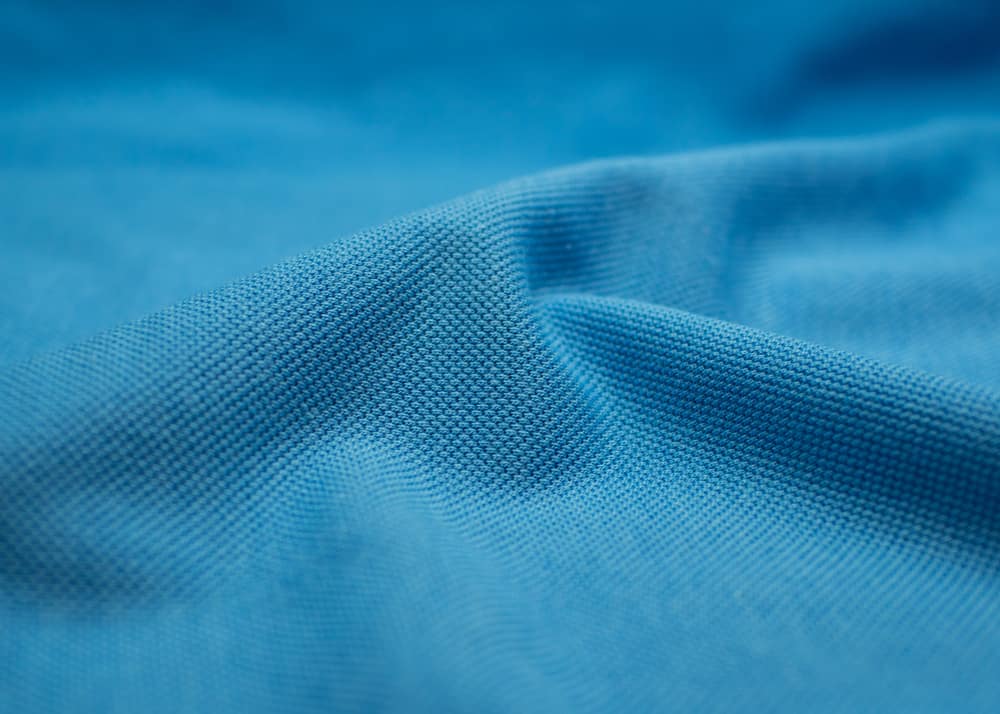
Pique comes in woven or knit varieties. What sets this material apart are its raised designs, such as cords, waffles, or wales. With the woven type, the cords are lengthwise, or in the warp direction. With knit materials, the fabric consists of double-knit patterns.
Silicone
Silicone is a highly elastic polymer that is often placed in lingerie to make it clingy so it’s extra form-fitting.
Soy
Yes, soy is more than a food additive. It’s an eco-friendly fabric too, made from the remnants of soybean processing. Soy requires the same care and maintenance as cotton.
Themastat
Themastat is a synthetic, moisture-wicking material that has a hollow core. It’s designed to keep the wearer warm and dry, so it’s a common component of activewear.
Velour
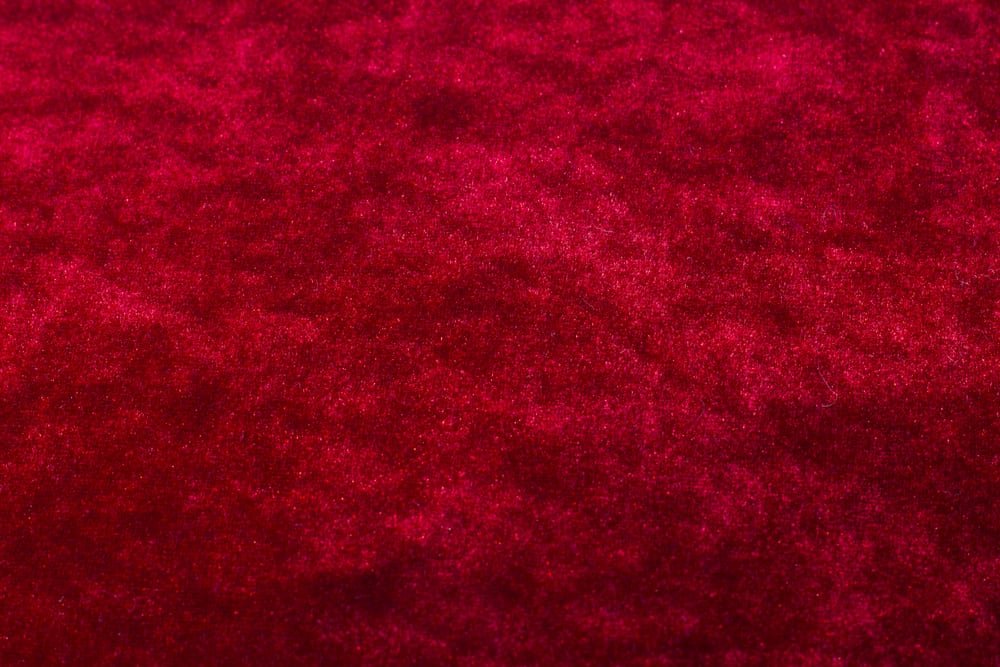
This velvet-like fabric is dense and super-plush. It can be fashioned from synthetic fibers or cotton.
Velvet

Velvet is a thick, woven fabric. It’s made from acetate, rayon, nylon, or silk. The material consists of soft piles of loops that can either be cut or uncut. Velveteen is a similar material made in mostly the same way, except that it comes from cotton.
Vinyl
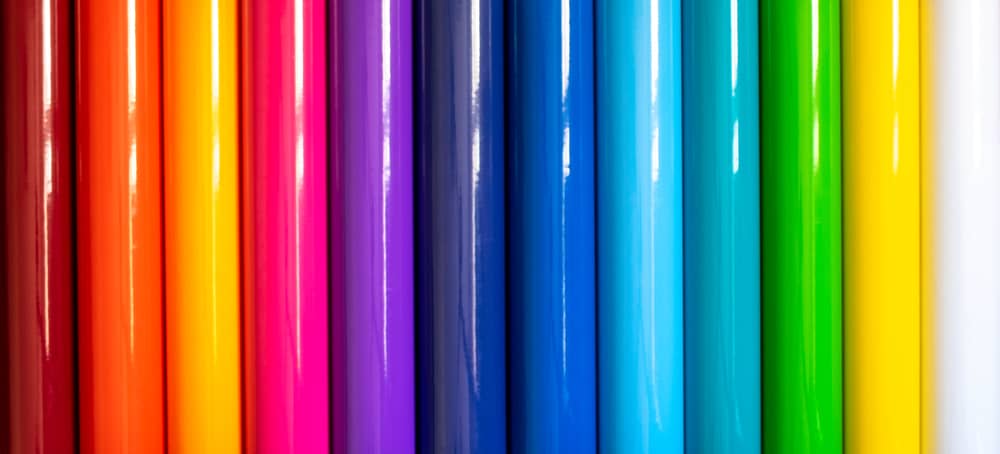
This is what rain gear is often made of. It consists of plastic-coated, shiny material with a backing made of woven polyester. Those fibers are covered with polyurethane and polyvinyl chloride (PVC) or just PVC by itself.
Types of Fabric for Footwear
We often take our shoes for granted, but there’s more to them than you might think. Here are the most oft-used materials for boots, sandals, and sneakers.
Denim

A popular choice for jeans, backpacks, and jackets, denim also works for making shoes. This cotton material first became popular in Europe during the 1700s. It’s tough and versatile. Denim can be used for tennis shoes, wedge sandals, and ballet slippers.
Nylon
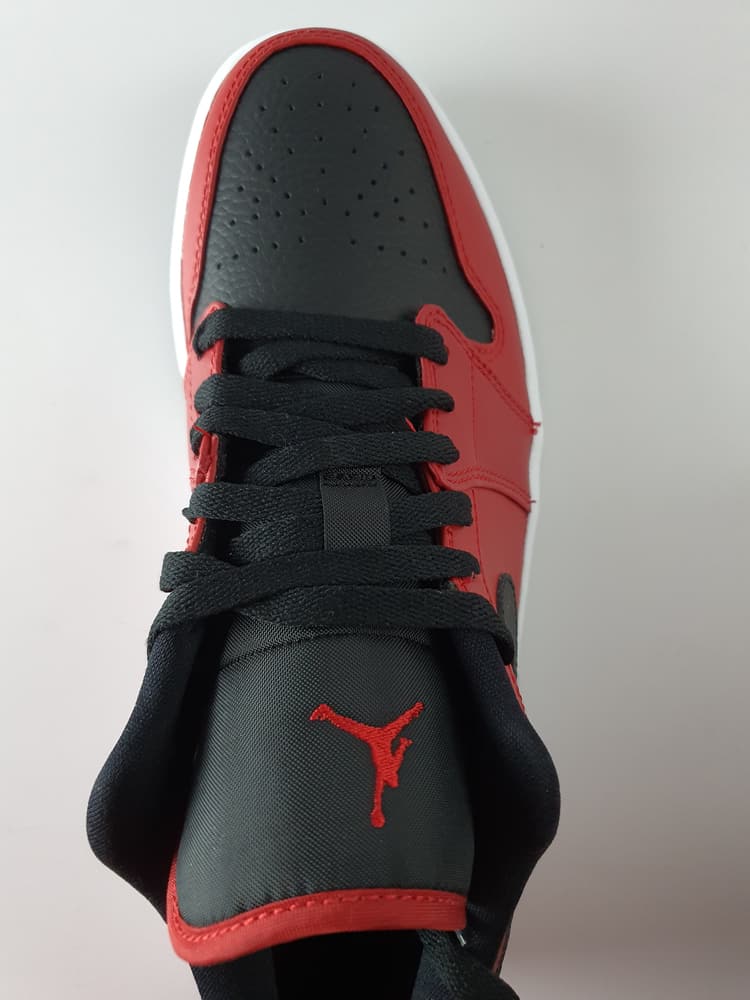
Nylon is a synthetic fabric that has been around since the early 1930s. Since it’s light and airy, it’s extremely “breathable.” That’s what makes it a go-to material for many types of running shoes. This is a good material to wear if you find yourself frequently on the move.
Canvas
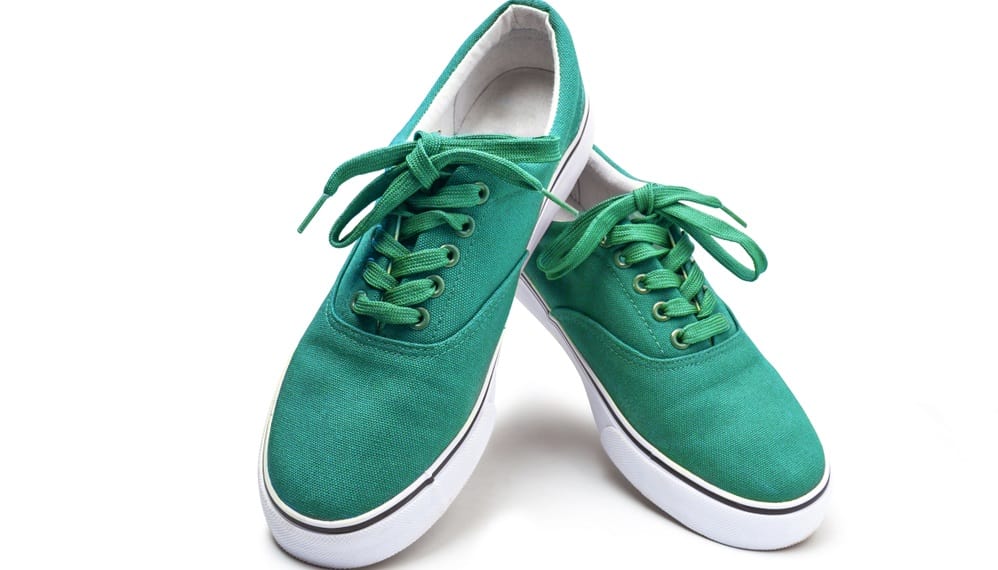
When you’re browsing the selection of sneakers at your favorite shoe store, it’s likely that many of them are made from canvas. Canvas fabric is especially well-suited to this type of shoe because it’s easy to clean. It’s also easy to dye, which is why you see sneakers in such a wide variety of fun, vivid colors.
When canvas first became a thing, it was made from hemp. But now other materials, such as flax and cotton, are incorporated into the material. Because it’s low maintenance, it’s also highly versatile.
Leather

Leather is a good choice for shoes, boots, and sandals because it’s so durable and comfortable. It’s made from animal hides, so many people associate it with cows. While it is derived from bovines, it also comes from the skins of crocodiles and even snakes.
Leather is found in a variety of footwear — brogues, pumps, boots, and loafers. Because it is so porous, though, it doesn’t hold up well when it gets wet. The good news is, you can use an all-weather protector to safeguard your leather footwear against damage from the elements.
Satin
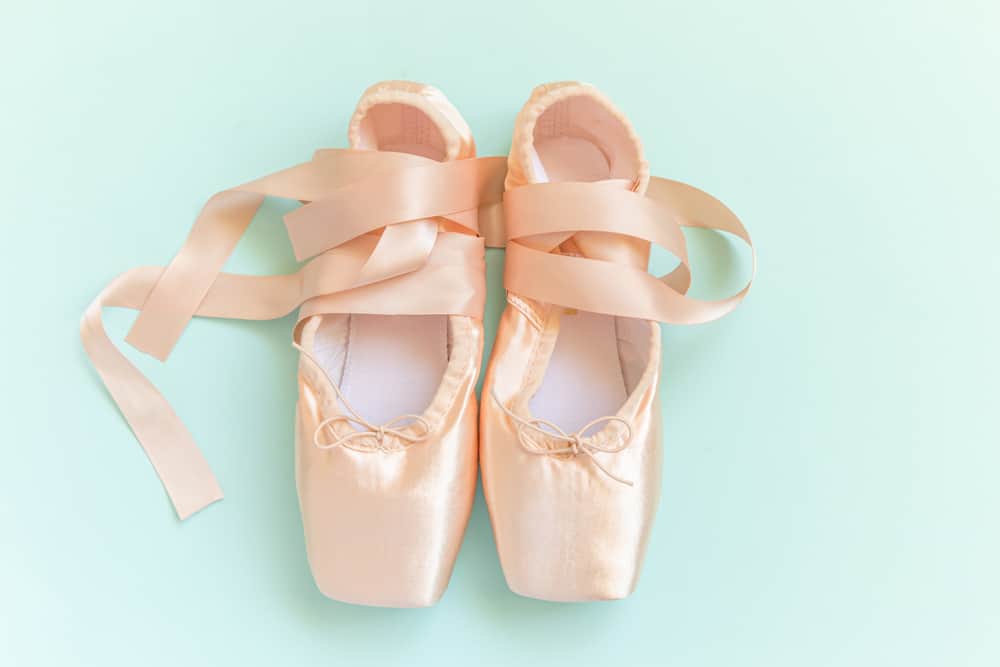
People often associate satin with wedding gowns, evening wear, and lingerie. But you /can also use this low-twist filament yarn to make delicate footwear. Satin isn’t a naturally-occurring fabric.
In fact, it isn’t technically a material at all, but a type of weave. Some seasoned sewists have different takes on which materials can be considered satin, claiming that the real stuff can only be made of silk. Satin has long been associated with luxury, and it’s used not only in a variety of apparel but also in furniture and bedding. While it’s comfortable and lustrous, it’s also prone to snagging and fraying and is high-maintenance.
Suede
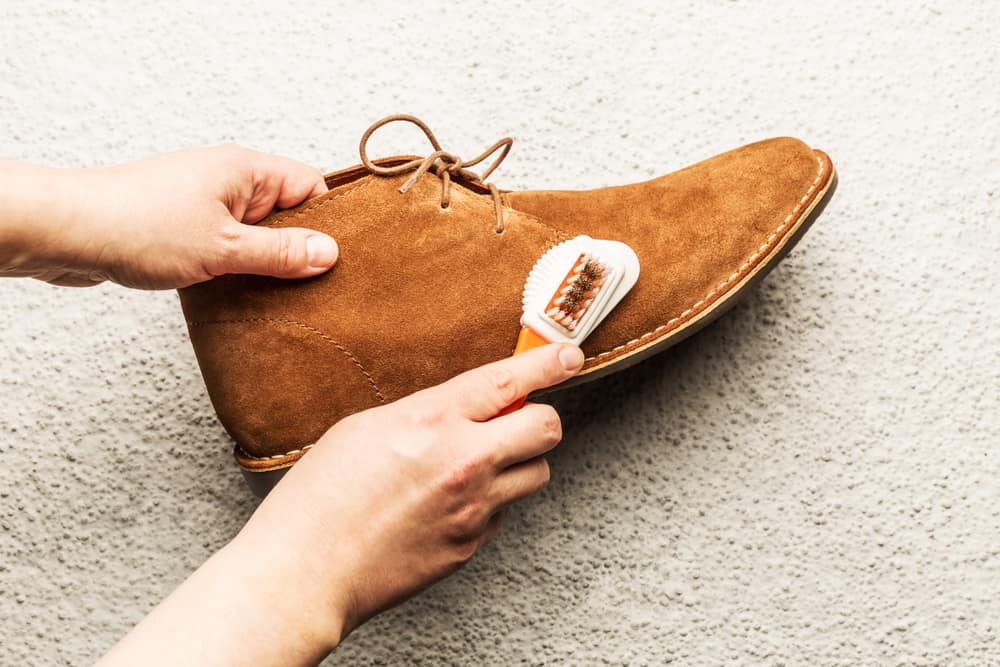
Suede is a type of leather made from the undersides of animal skins and hides. As such, it’s thinner and more pliable than your typical, full-grain leather. It’s still very durable, but you don’t want to get it wet, which can present challenges when it comes to footwear, as it is frequently subjected to all kinds of weather elements. Suede gives boots and sandals a stylish or rugged look, depending on how they’re made.
Common Sewing Terms

Now that you know more about the types of fabric used for clothing and footwear, you might like to know about some of the terminology associated with textiles and sewing. When you’re just starting out making your own apparel, some of the jargon can get a little confusing. Here are some important things to know as you try your hand at various projects.
Backstitch
This is needed when you want to secure a whole line of stitches. Backstitches consist of overlapping stitches at the beginning and end of a line of stitches. To complete a backstitch, use your machine to sew 1-3 stitches. Reverse the direction of the feed dogs and stitch right on top of the stitches you’ve already made. When you’ve finished the backstitch, you can keep sewing the rest of the seam, and then repeat the backstitching steps when you reach the end of the line of stitches.
Baste
These are long stitches, done either by hand or with a sewing machine. Their job is to temporarily hold the fabric in place while you sew. You remove them once you’ve finished the final seam.
Clip
You can use this technique when you want to flatten a curved seam. Along the inner curve, snip carefully at even intervals, making sure not to cut into your line of stitches.
Edgestitch
This technique requires you to add a second row of stitches close to the seam line (on the right side of the fabric). The purpose of the edgestitch is to keep pressed seams in place.
Finish Seams
Finishing your seams makes them look neater and keeps them from fraying. When you’re working with sturdy materials, all you have to do is use pinking shears to trim the seams. With lighter fabric, you’ll need to sew a zigzag stitch along the seam. These aren’t the only ways to finish seams; other methods include bound edges, serged edges, and turned-under seams.
Gather
You can use gathering stitches when you want to sew a longer edge to a shorter one. This adds fullness to garments like dresses and skirts. Gather by using a long stitch length. Make three rows of stitches parallel to each other. If you leave room for long thread tails, these can be tugged so you can do any necessary adjusting before you sew.
Grade seams
Grading seams cut down on bulk when you are pressing the seam allowance in one direction. After sewing the seam, trim the seam allowance in half. Then, figure out which side of the seam allowance will rest against the body when pressed. Trim that side of the seam allowance in half.
Knit Fabric
We mentioned this fabric type earlier, but some people feel intimidated when they initially begin working with it. So here’s what you need to know about it as it applies to sewing. Knits are made from one continuous piece of yarn that is looped over and over. This gives it lots of stretch. Unfortunately, it’s also prone to unraveling. The good news about knits, though, is that they don’t become frayed.
Woven Materials
Woven materials consist of yarns woven across each other at right angles. Some are not stretchable at all, while others have some give. These fabrics can also unravel. To prevent this, be sure to finish any raw edges.
Notch
If you’re using a pattern, you’ll notice that it has notches on it. These are designed to help you line up the pattern pieces correctly when it’s time to sew them together. There is another type of notch, too, that is added when sewing the outside edges of curved seams. To add these notches, cut wedges into the seam allowance at even intervals. Just be careful not to cut into the stitching.
Raw Edge
This is the cut edge of the fabric. It gets its name because, in its raw form, it is unfinished.
Staystitch
This is just a straight stitch that you sew through one layer of fabric. You can use it around curves before sewing, as it stabilizes the material so your seams don’t become misaligned. Use a slightly smaller stitch length for staystitching.
Seam Allowance
This is the distance between the line of stitches and the raw edge of your material. Most patterns come with a seam allowance measuring 5/8 of an inch.
Stitch Length
This is controlled by the feed dogs on your machine. Depending on your project, you can set the length to achieve longer or shorter stitches.
Topstitch
Topstitches are parallel to the outside of the apparel, usually about 1/4 of an inch from the seam. To topstitch, first press the seam so it lays flat. Then, sew through the fabric and seam allowance. This technique is similar to edge stitching. But topstitches are more conspicuous, so they’re best used for decorative purposes.
Understitch
This type of stitch enables seams to lay flat. This also keeps linings and facings from slipping to the outside of the garment. To understitch, press the seam toward your facing. Then, staying very close to the seam line, stitch the facing to the seam.
Bias
When you make a cut on an angle 45 degrees to the selvage, that’s considered true bias. Cutting in this direction gives your garment maximum stretch. Bias in general describes any line running diagonally to both the lengthwise and crosswise grains of the fabric. Pattern pieces usually call for true bias. You can use the pattern layout and grainline arrows as a helpful guide.
Selvage
This is the edge of the fabric that is self-finished. There are selvages on either finished edge of fabric. They are made during the manufacturing process, which frequently takes place on a loom.
Grainline
The grainline is parallel to the selvage. On a pattern, the long arrow corresponds to the grainline. You’ll need this as a reference when you lay out the pieces.
Crossgrain
As you may have guessed, the cross-grain runs perpendicular to the selvage.
Sewing Tools
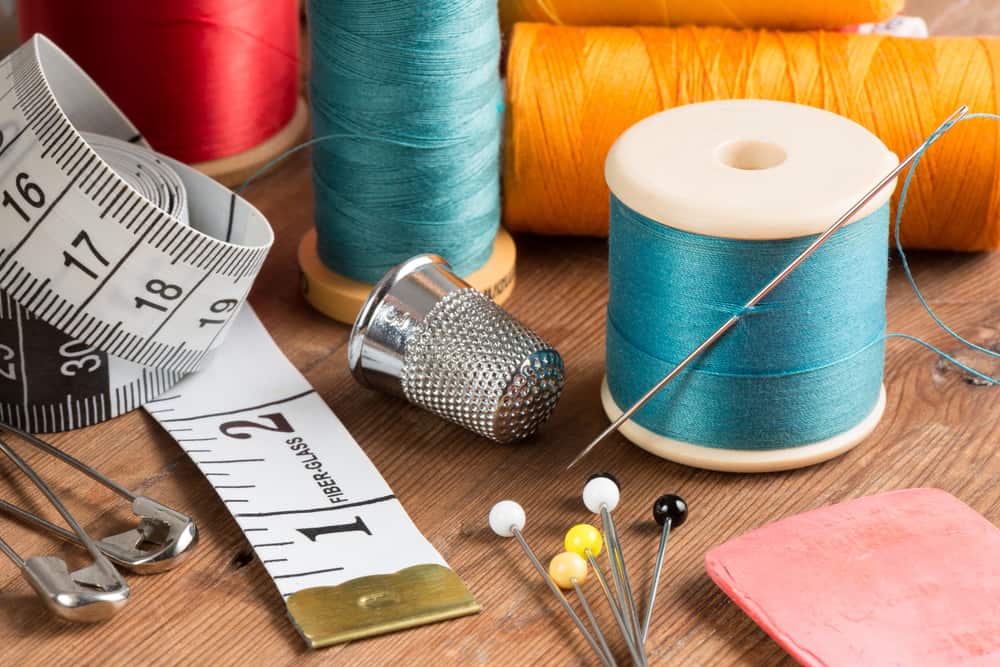
When you’re setting out to 41make your own clothing, it’s essential to have the right tools. Here are the basics you need to get started.
Good Scissors
Tailor’s scissors are especially helpful when cutting fabric. They last a long time and you can sharpen them when they get dull, which saves you the hassle of buying replacements. Large scissors can definitely make life easier. But you should have a small pair on hand too, for trimming seams and snipping stray threads.
Tape Measure/Rulers
When you sew, you’ll be doing a lot of measuring, so you’ll need the right equipment. Some people prefer using a clear ruler, as it improves the visibility of the fabric underneath — a plus when you are marking the material or need to see where you marked it.
Needles
It’s a good idea to have sewing machine needles and hand-sewing needles in your toolkit. With sewing machine needles, the eye is near the tip. With the hand-sewing variety, the eye is located on the other end of the shaft.
Pincushions and Pins
You’ll need a good supply of pins to hold material in place while you’re sewing. You can keep track of them by keeping them in a jar or sticking them in pincushions. Seasoned sewists recommend that you don’t buy pins with plastic heads. These will melt when you press the fabric with a hot iron.
Steam Iron
Pressing the fabric as you work will improve the appearance of your finished product. An iron with a steam feature can help you knock out stubborn wrinkles. You may want to use a cloth to place between the fabric and the iron to keep your material from scorching.
Thimble
Some people think you only need a thimble for hand-sewing, but you can use one with a sewing machine, too. Thimbles are worn on the middle fingertip.
Threader
Whether sewing by hand or with a machine, you can never go wrong with having a threader close by. Just stick it through the eye of the needle, then pull back, and it does the threading for you.
Thread
Make sure the weight and thickness of your thread are appropriate for your project. Cotton thread is recommended for woven fabrics, while polyester works well with knits. Of course, thread comes in a variety of other materials, too.
Marking Pens and Chalk
When you need to mark your fabric, you can use chalk or special marking pens filled with disappearing ink. Many of these markers are designed so that the ink vanishes when you press the fabric.
Rotary Tool
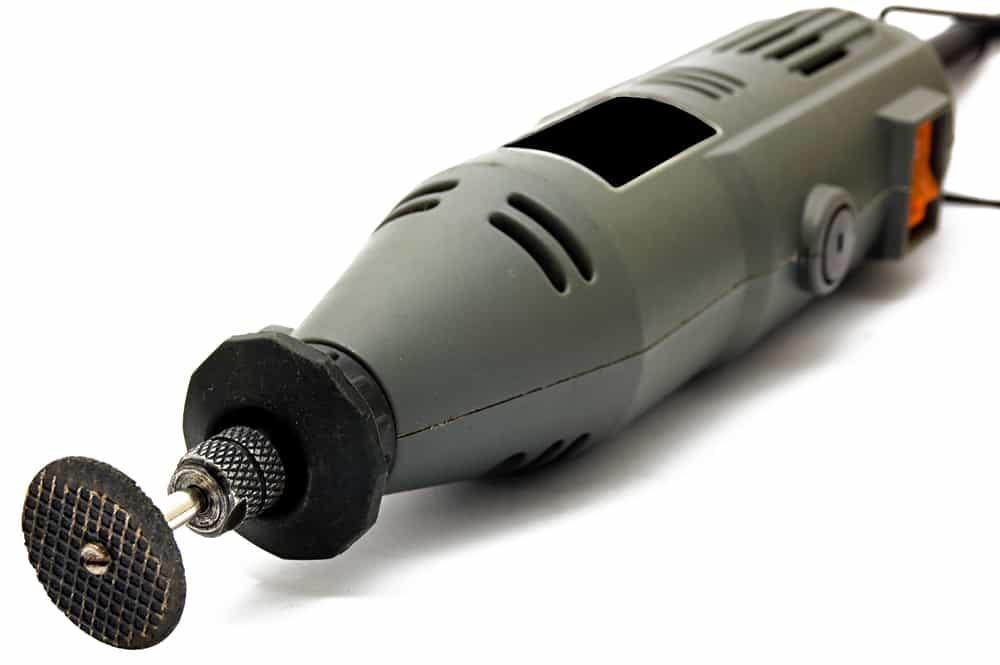
Many people find that they can achieve a cleaner cut, especially when slicing through several layers of fabric at once, if they use a rotary tool.
Lint Roller
A lint roller will help you quickly remove stray threads and scraps from your project so they don’t get in the way.
Pattern Weights
Pattern weights are a must-have when you need to hold fabric in place but can’t pin it because pinning would damage it.
Tweezers and Seam Rippers
Seam rippers are helpful when you need to rip out seams that were sewn incorrectly, and for opening buttonholes. Tweezers help you thread needles and loopers when you’re using a serger.
FAQs
What is meant by woven fabric?
Woven materials are constructed from two pieces of yarn stretched over a loom. These pieces are woven together horizontally and vertically. Because woven fibers run at 45-degree angles to each other, they generally do not stretch.
What is meant by the right and wrong sides of the fabric?
The right side of the fabric is the one where you can best see the pattern printed on it. The colors will be especially clear and bright. On the wrong side, you either won’t be able to see the pattern at all, or it will look faded. It’s a lot like trying to make out the print on a T-shirt that is turned inside out. Reversible materials and some knit patterns don’t have a distinct right and wrong side.
What is meant by warp and weft?
Warp and weft refer to the directionality of threads in woven fabrics. Warp threads go vertically along the length of the fabric parallel to the selvage. Weft threads (the horizontal threads) run side to side, or from selvage to selvage.
Why should you pre-wash fabric before starting your sewing project?
Many fabrics tend to shrink when washed. If you sew first and then wash, your material may not fit the way you intended, and it may not look as “finished” as it did before washing. Washing first allows you to get the shrink out of it ahead of time. Then, when you sew your garment, you’ll know exactly how it will look and fit.

